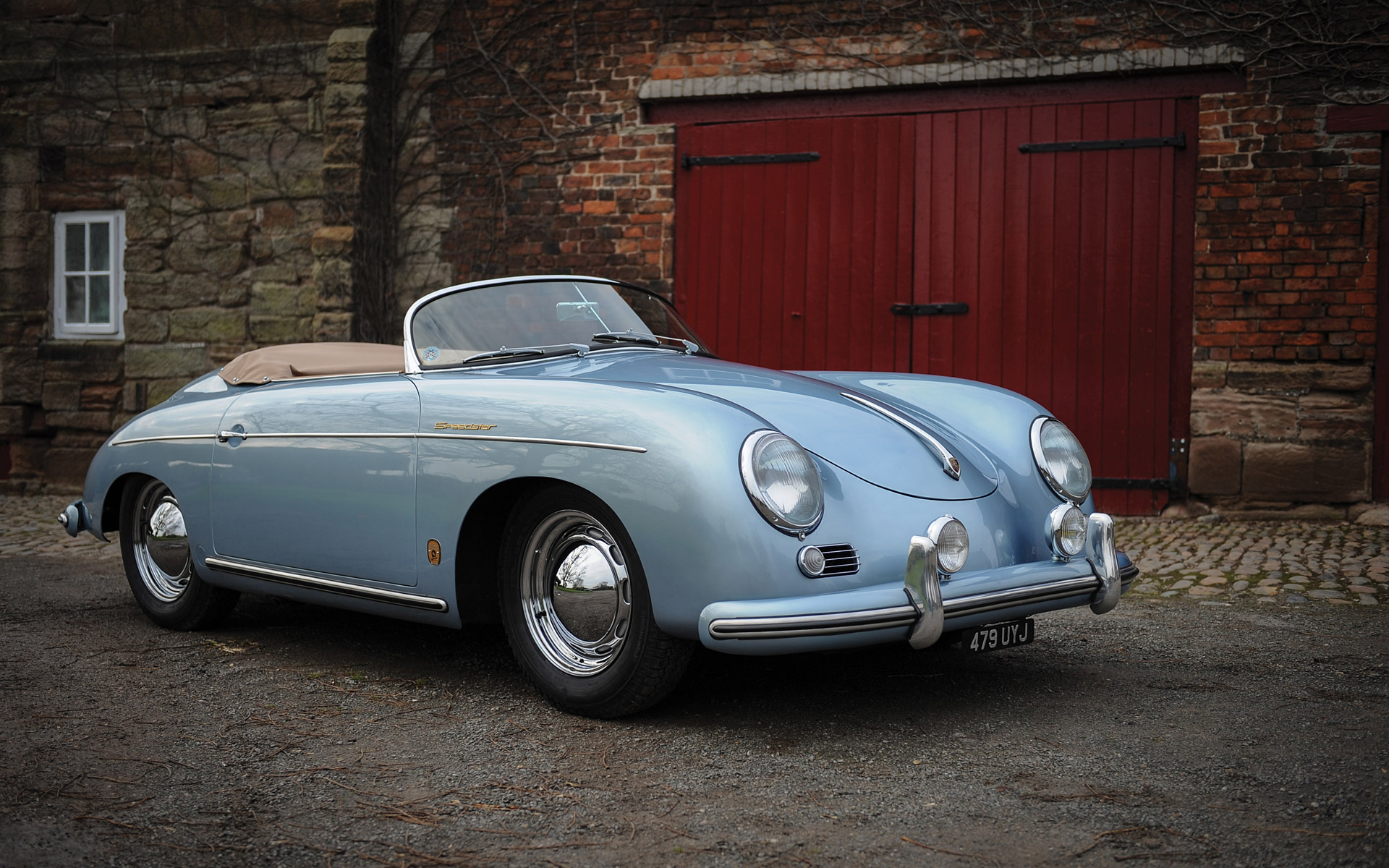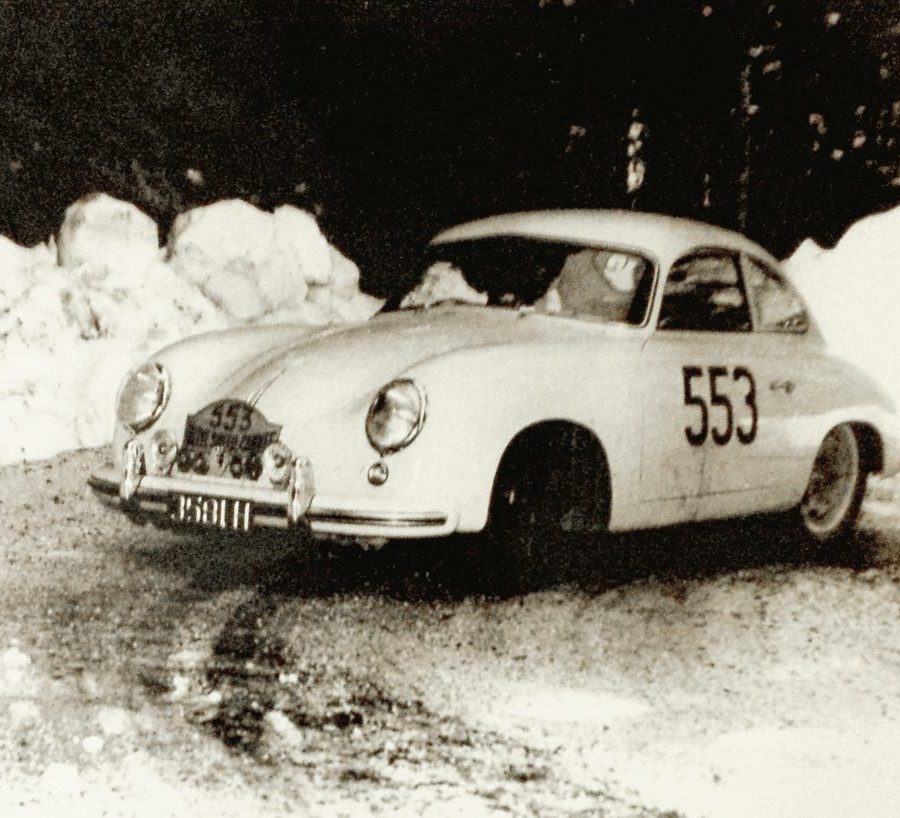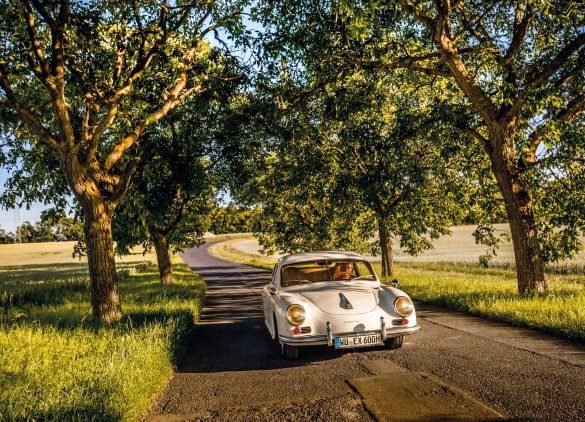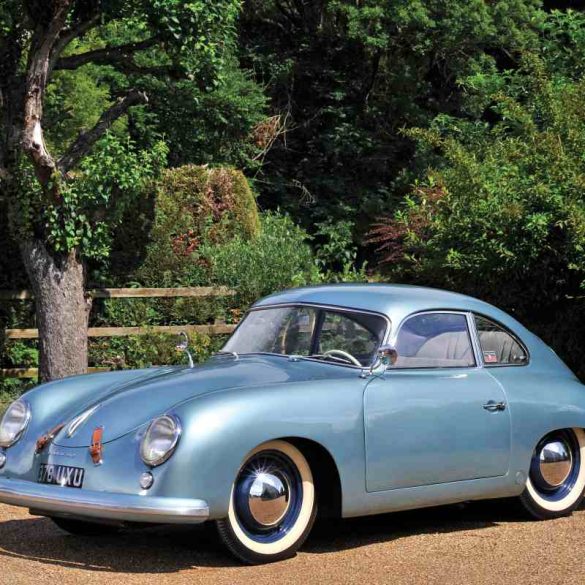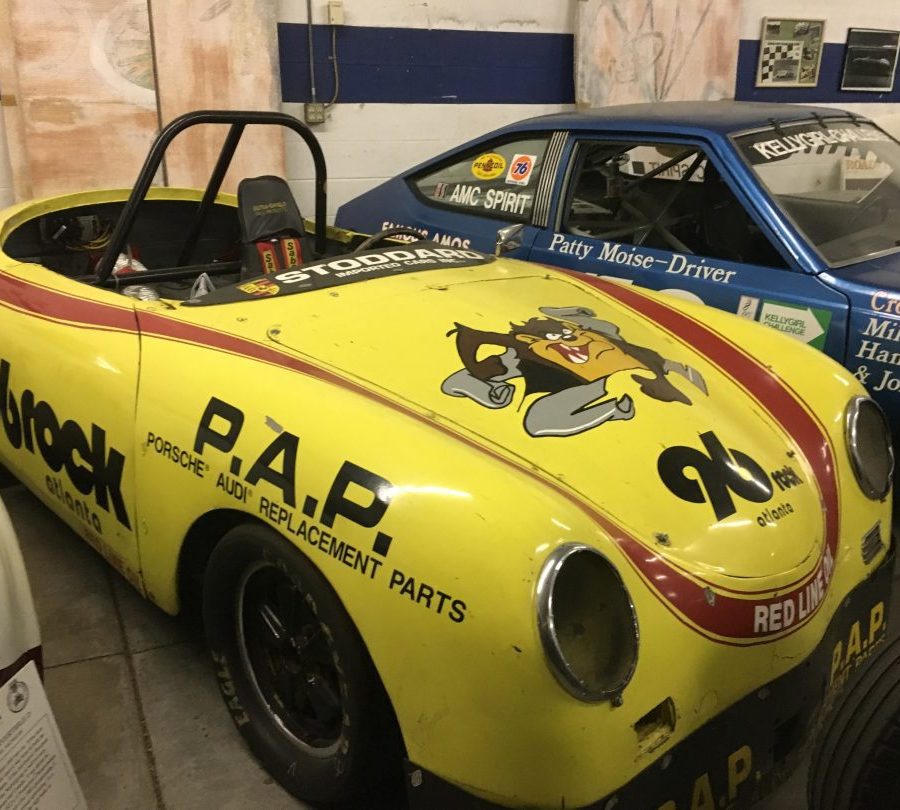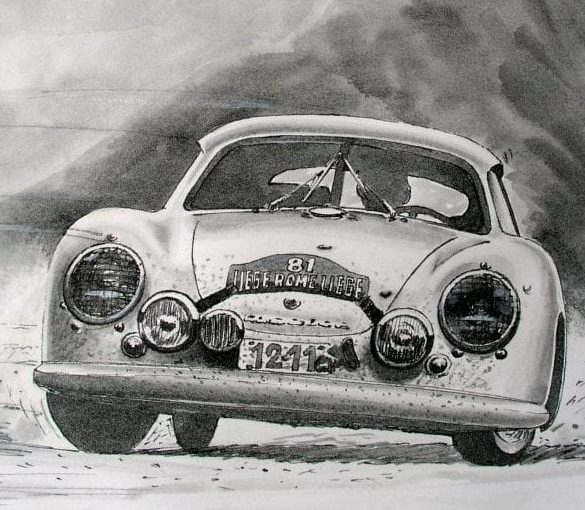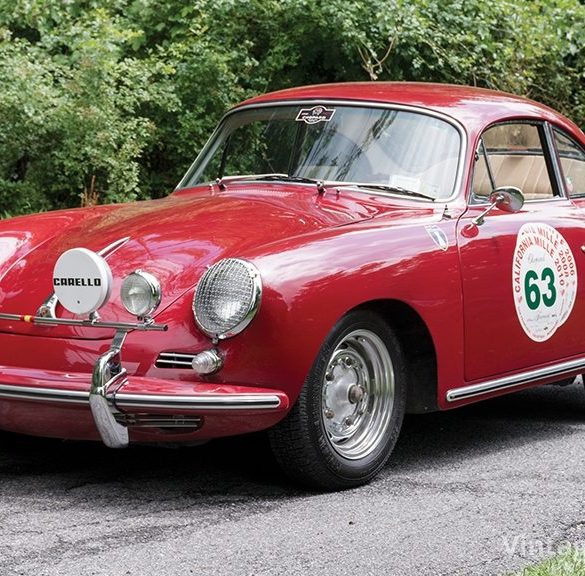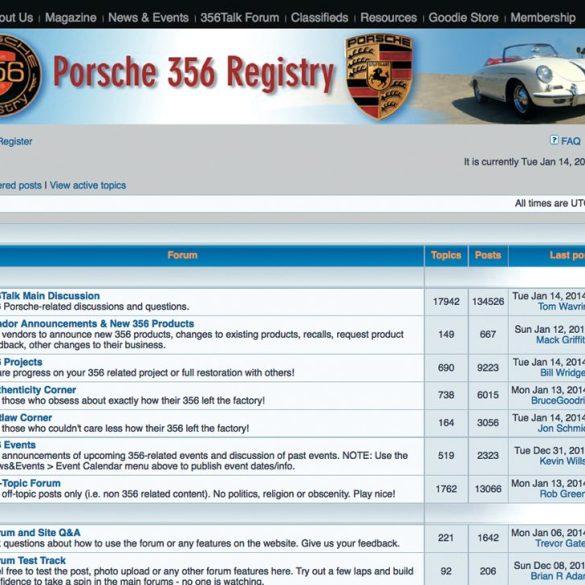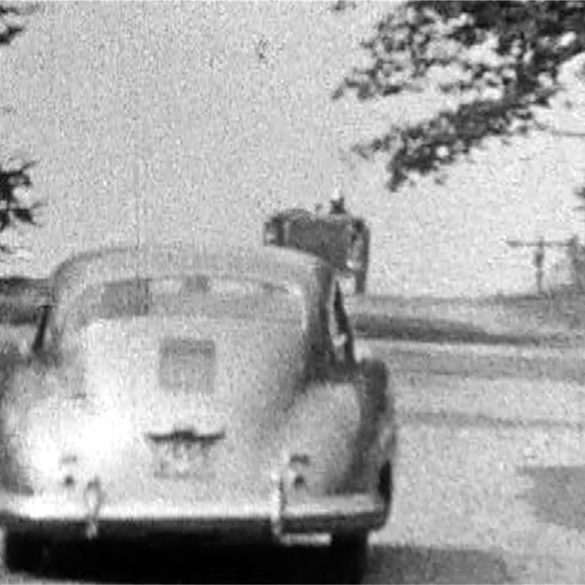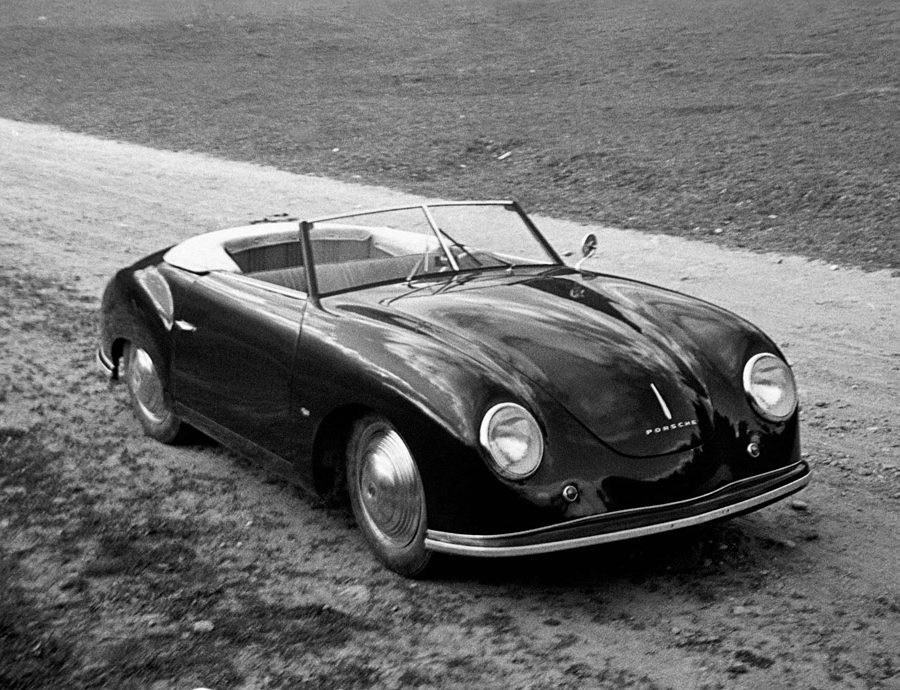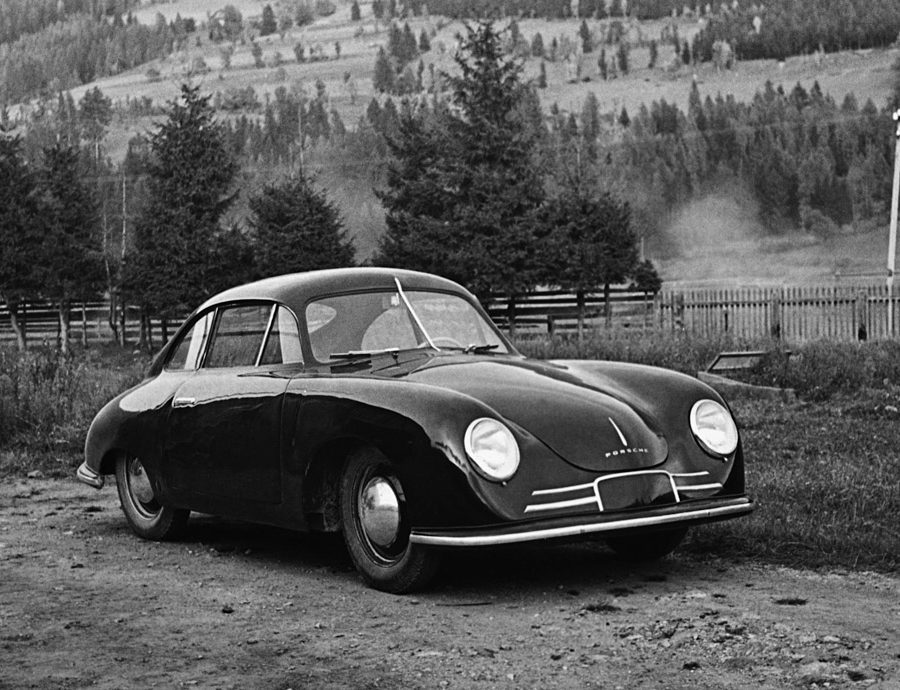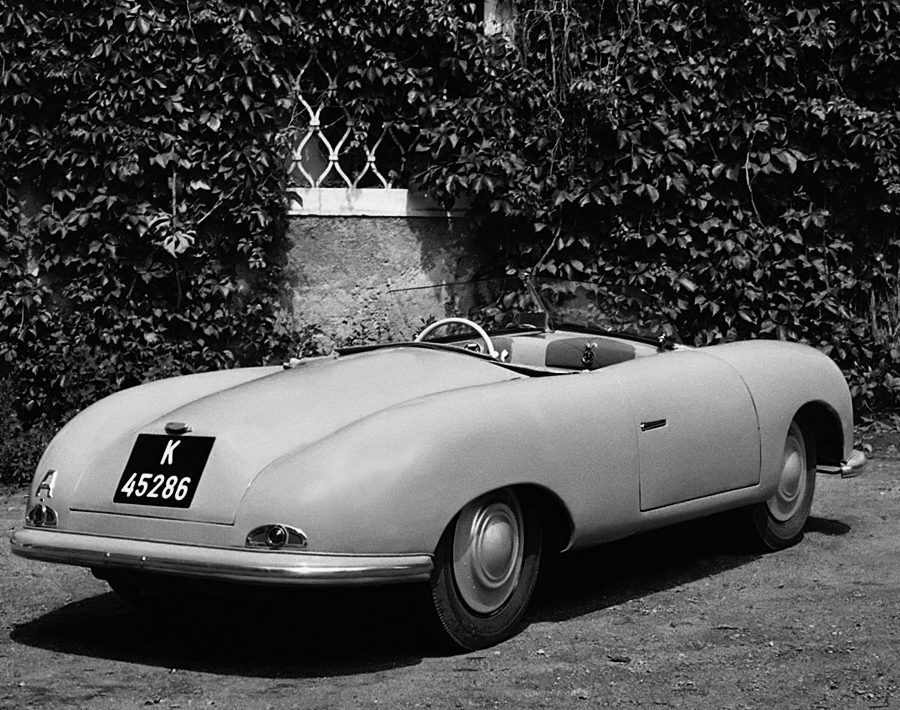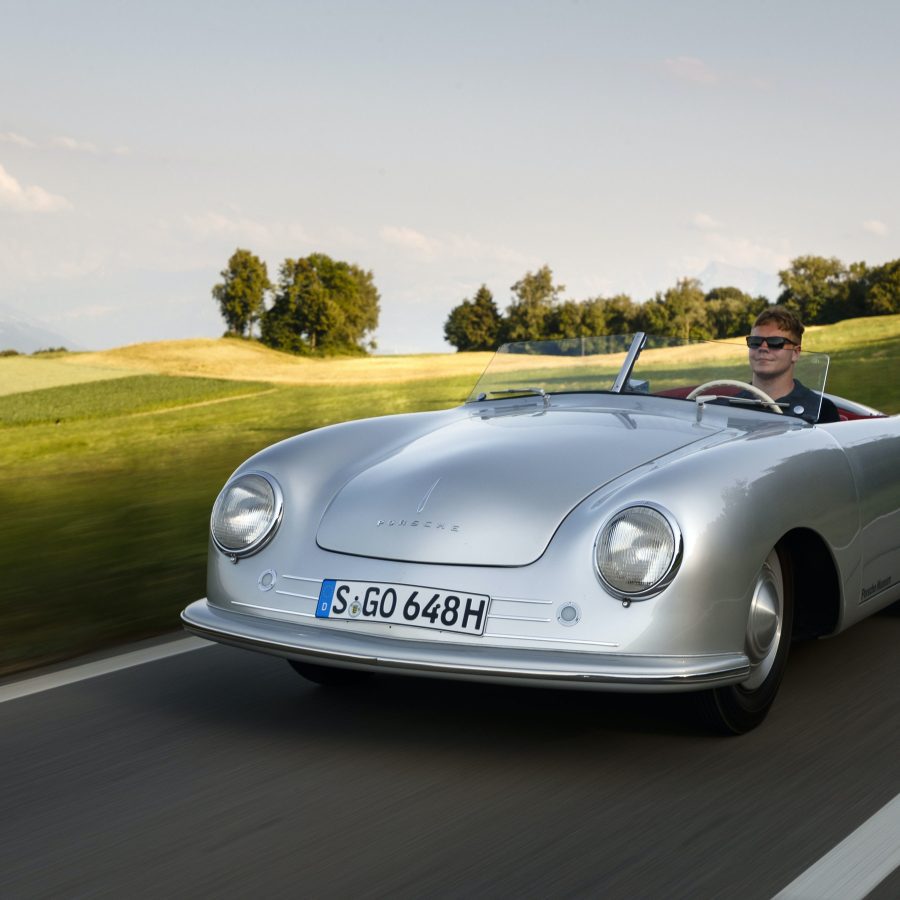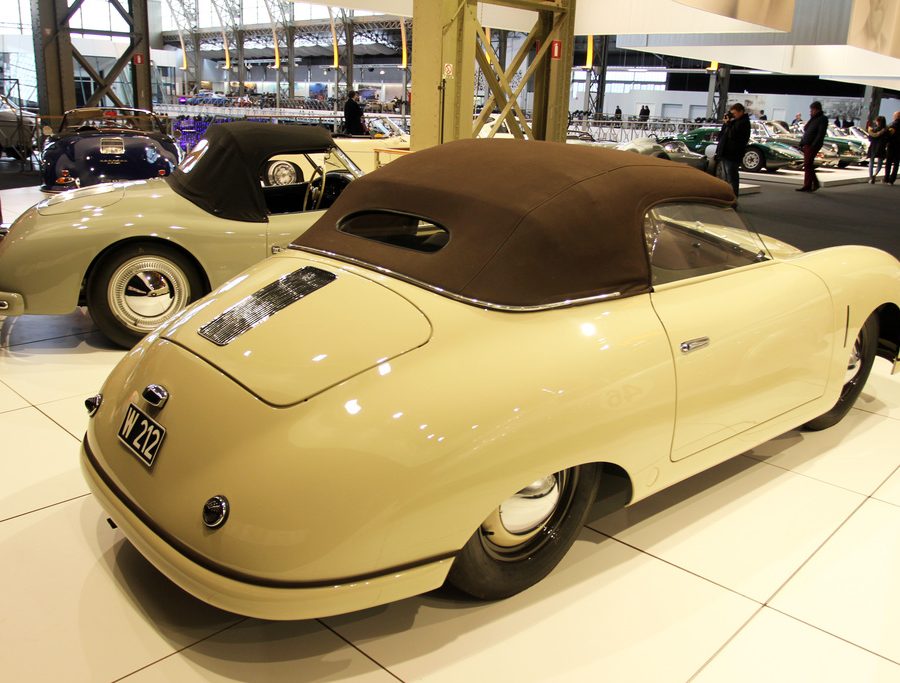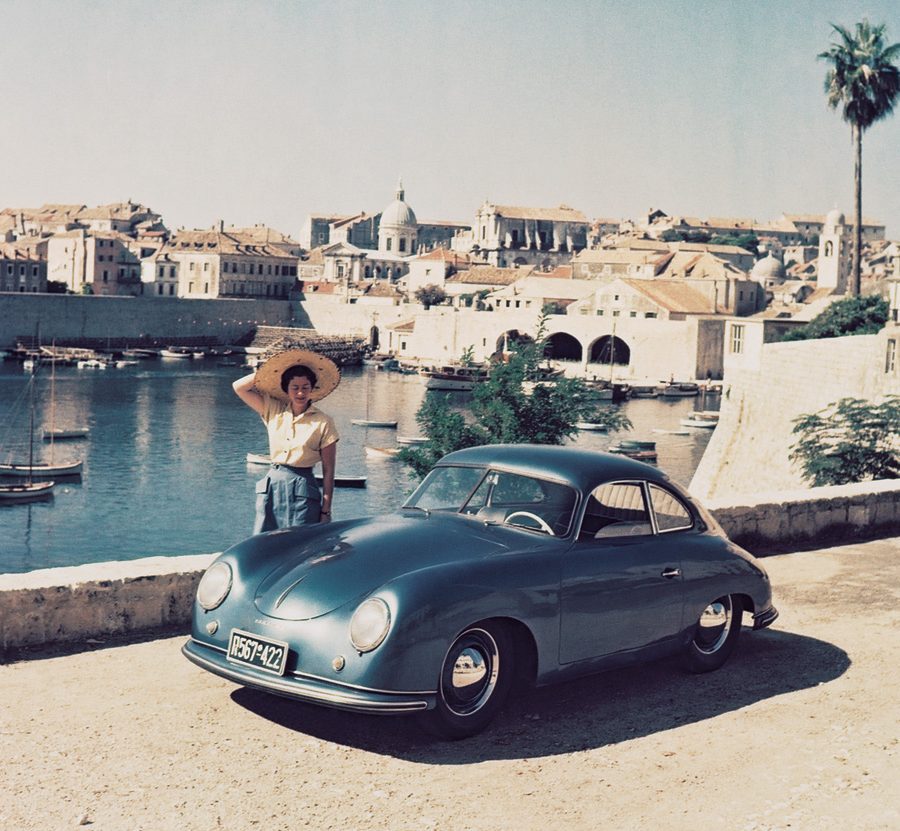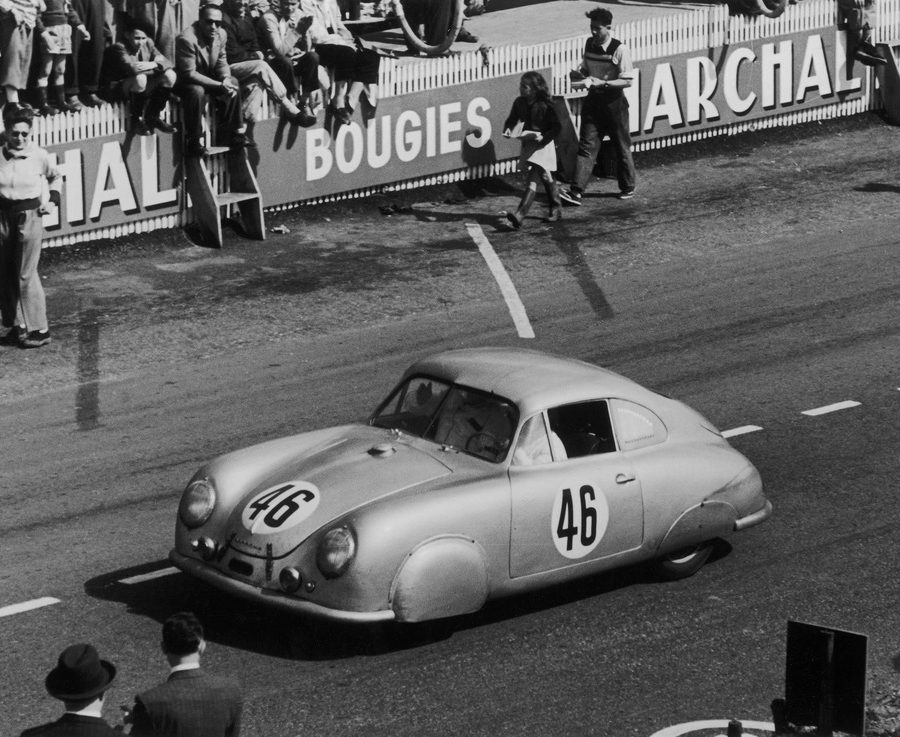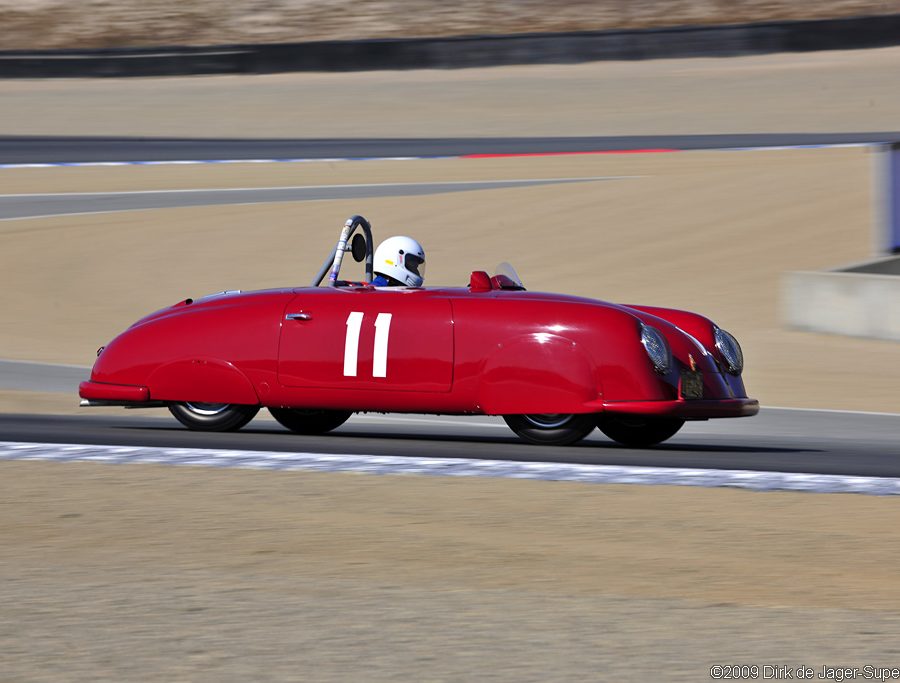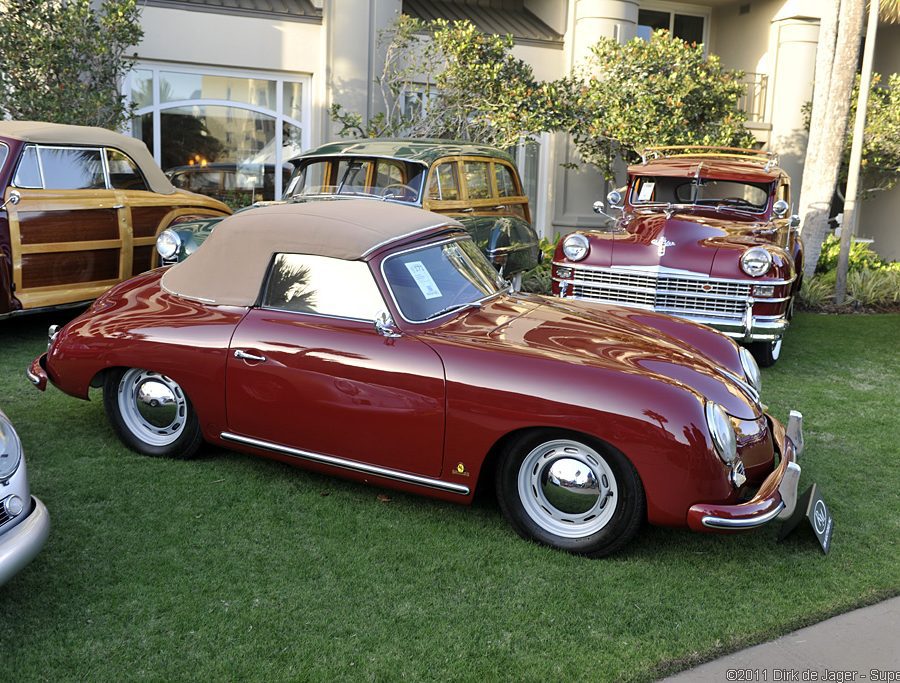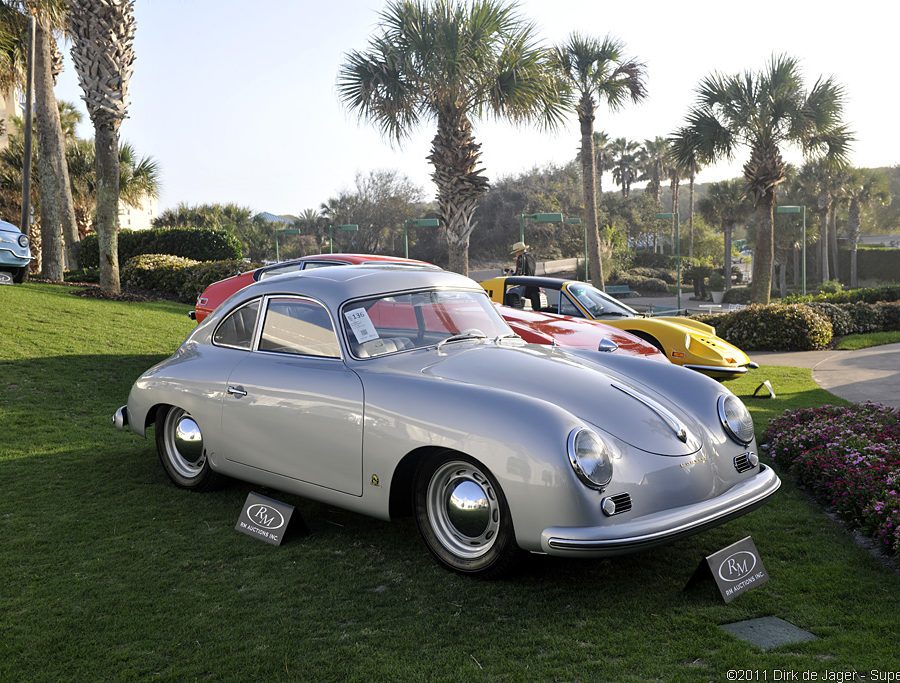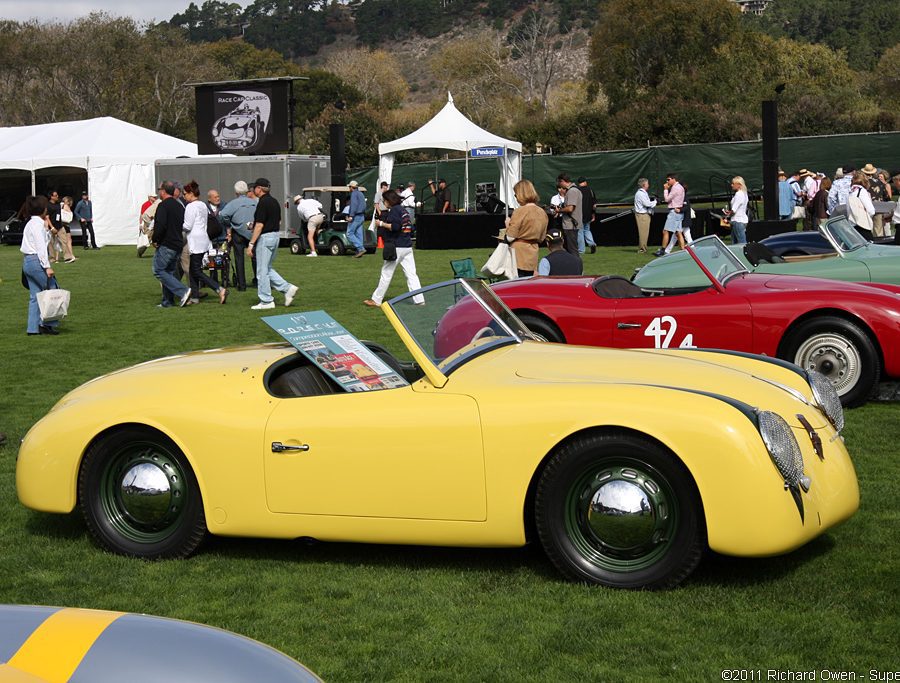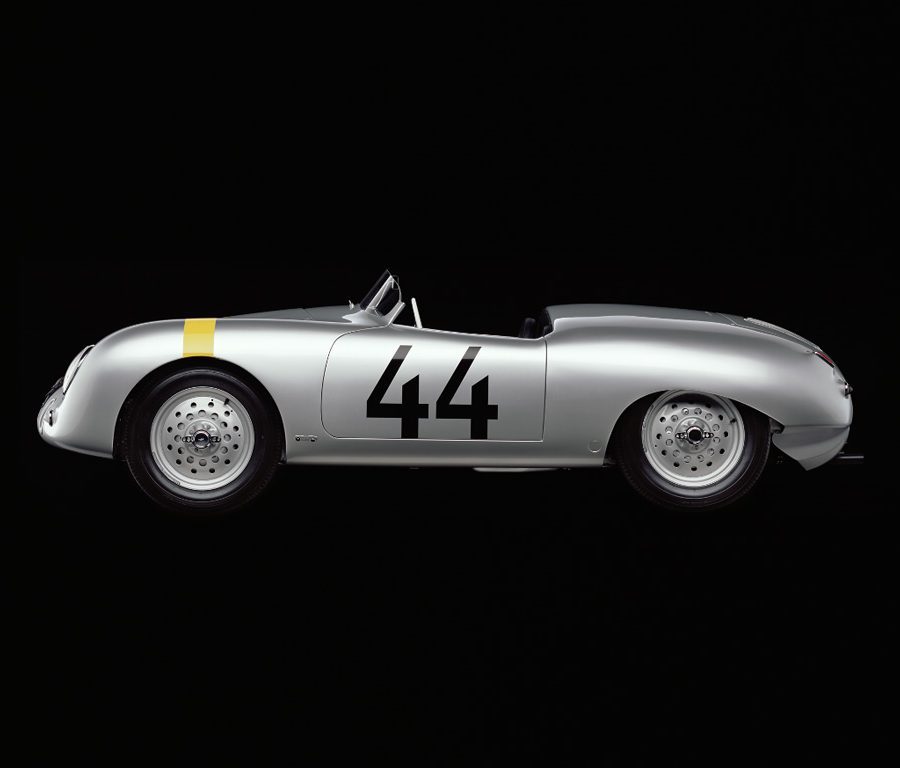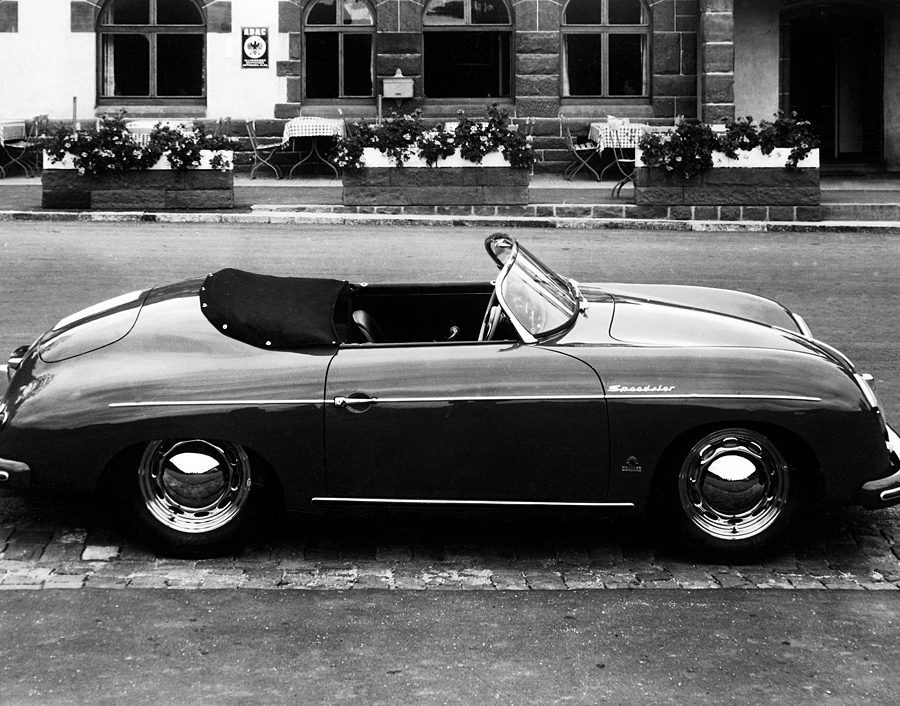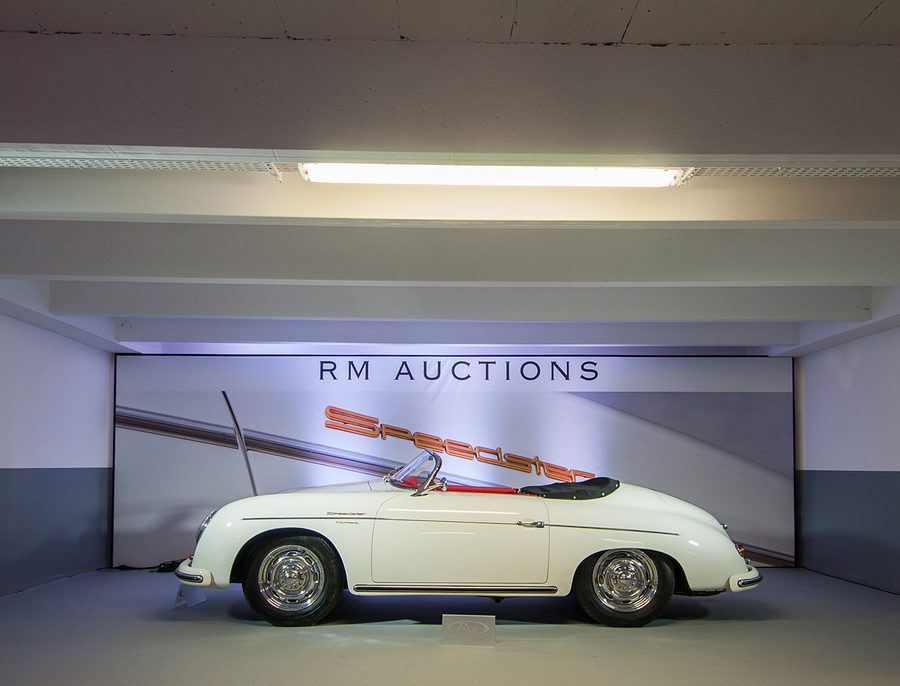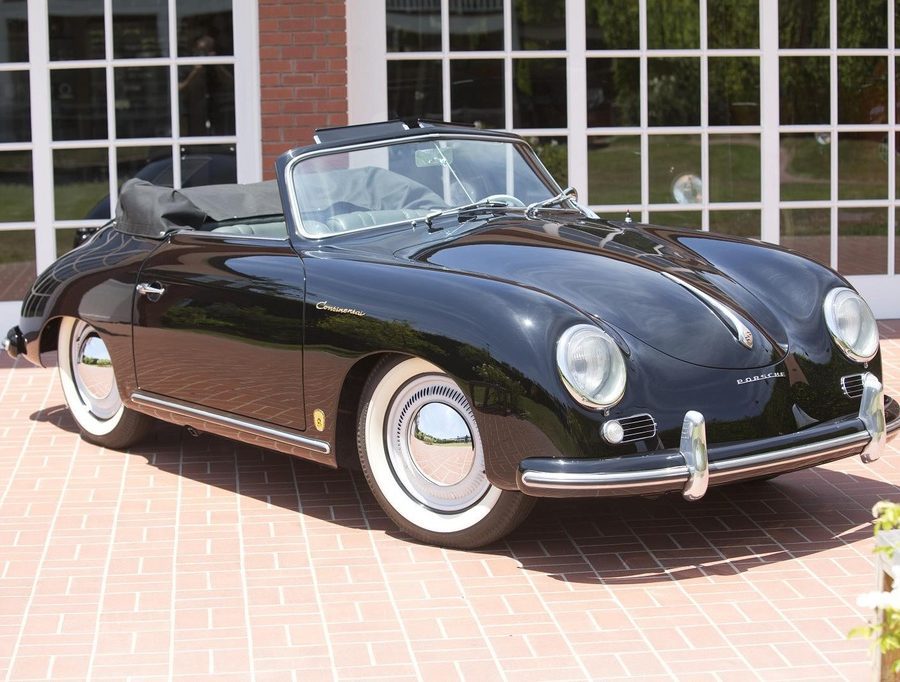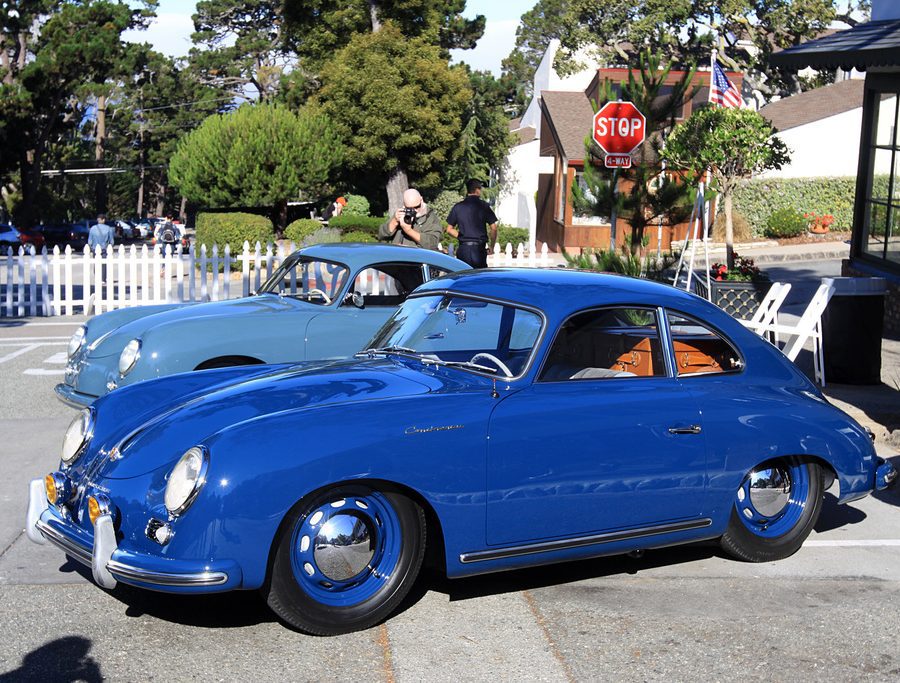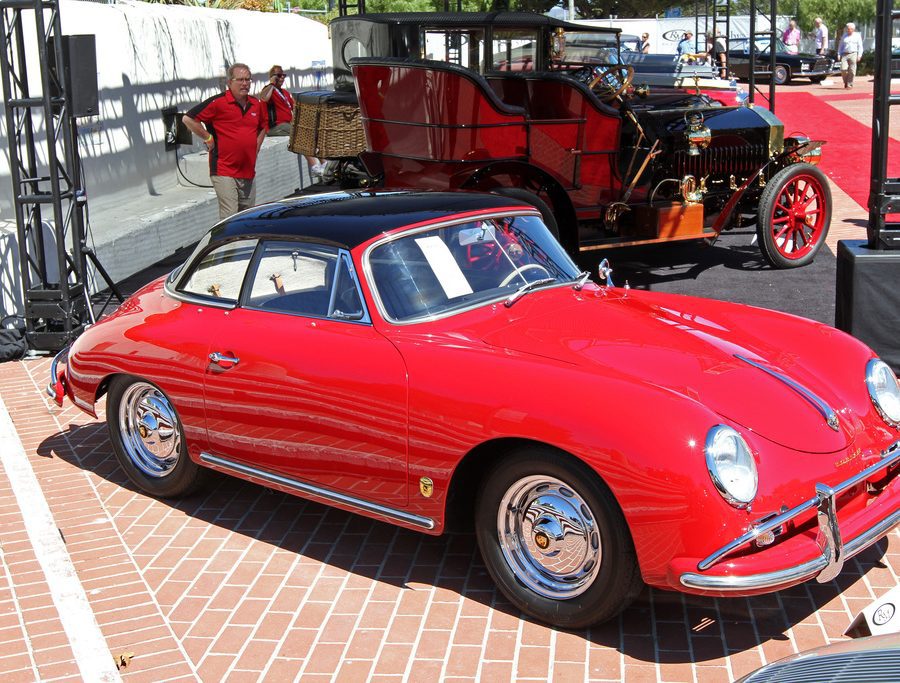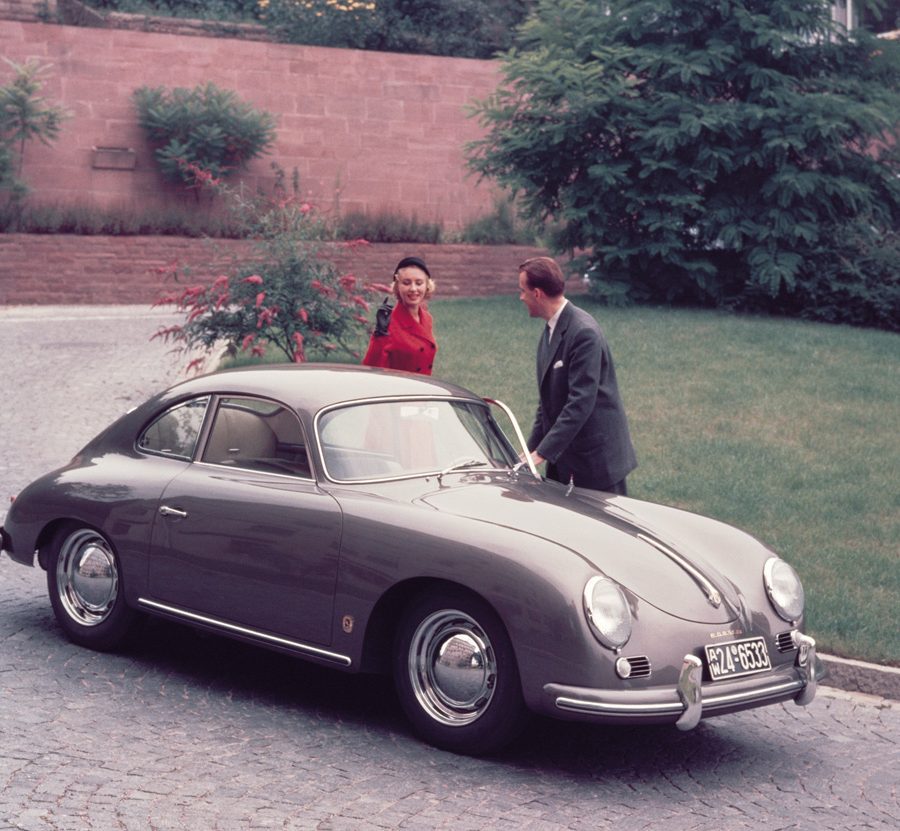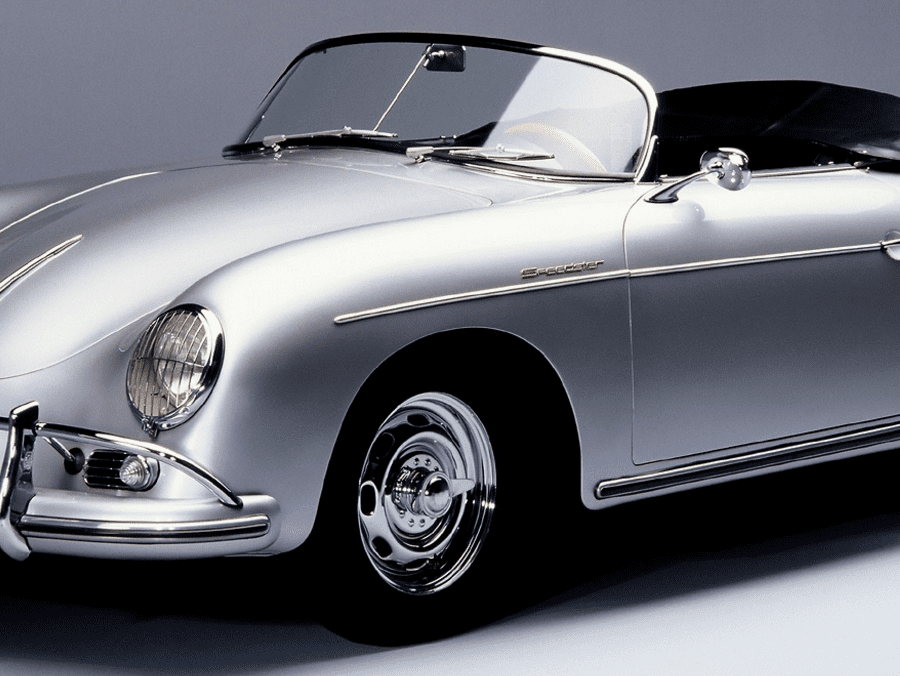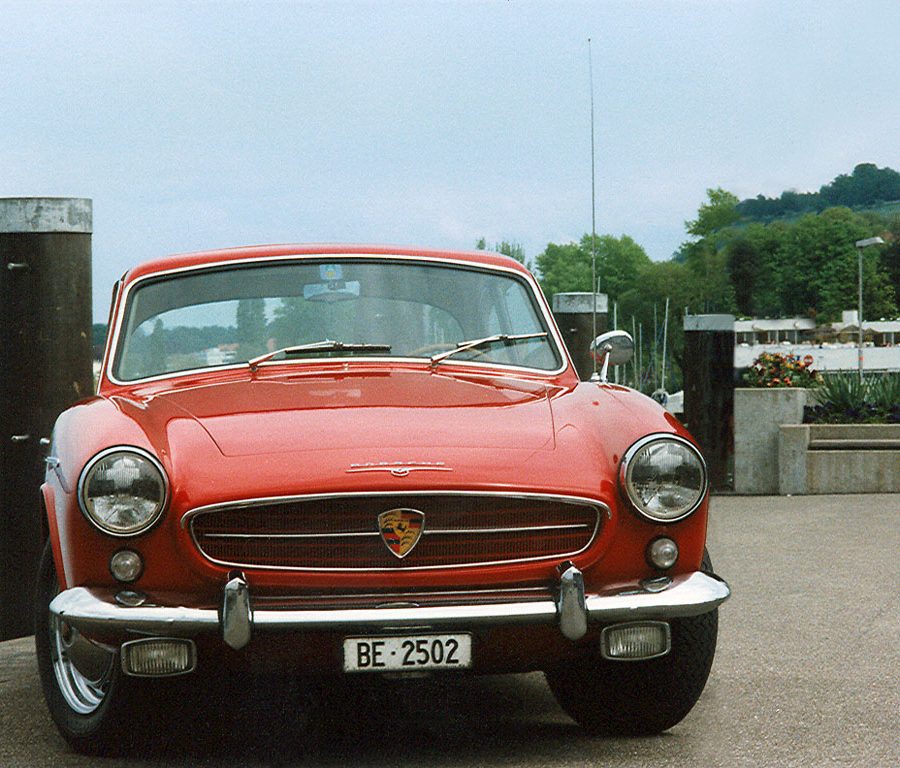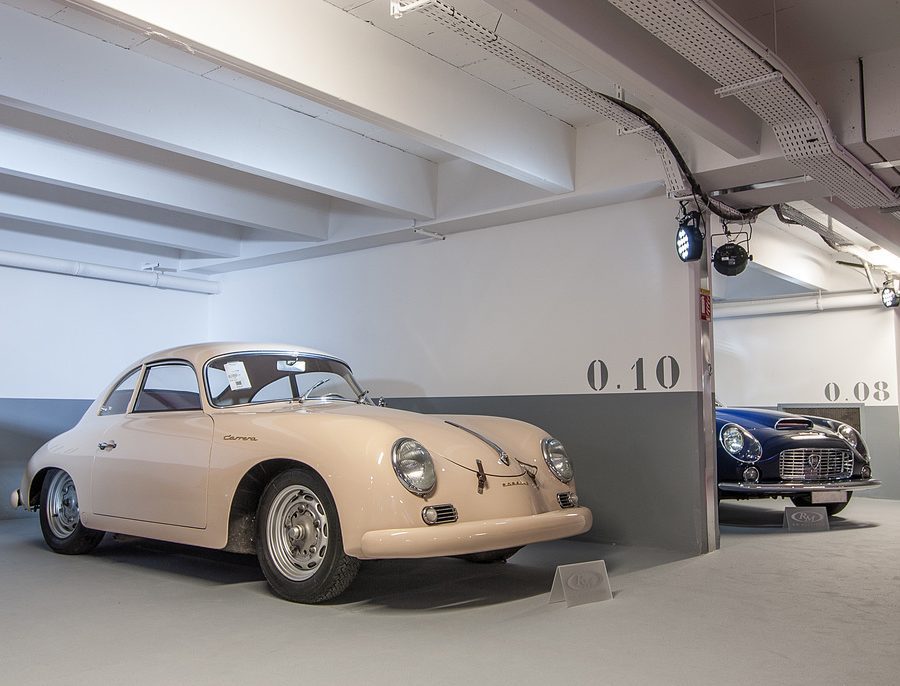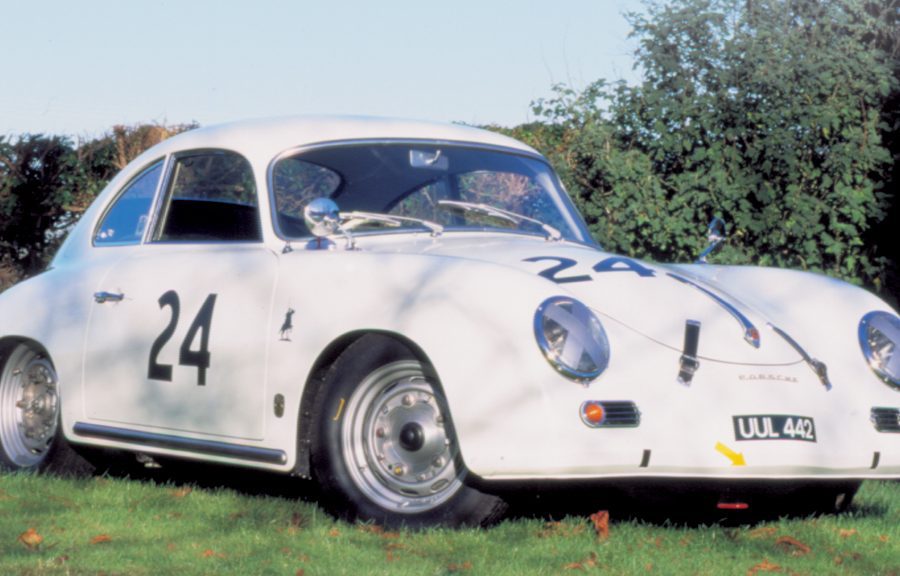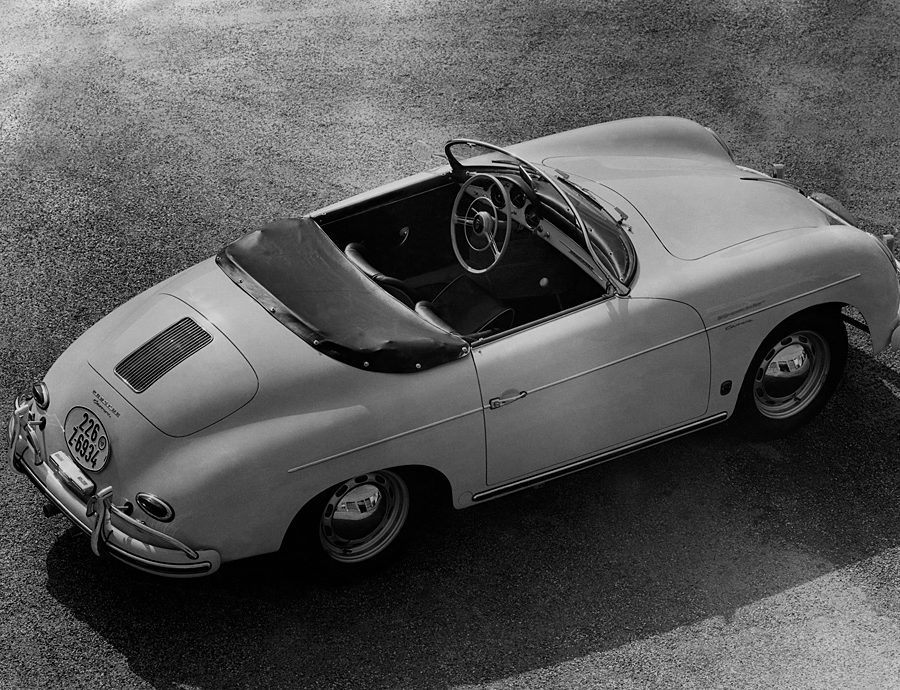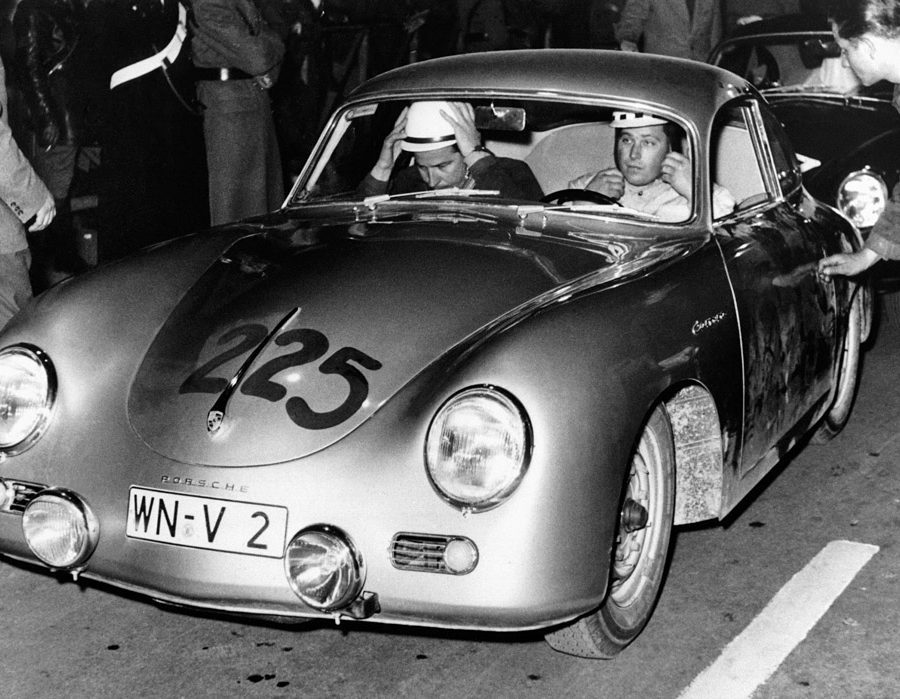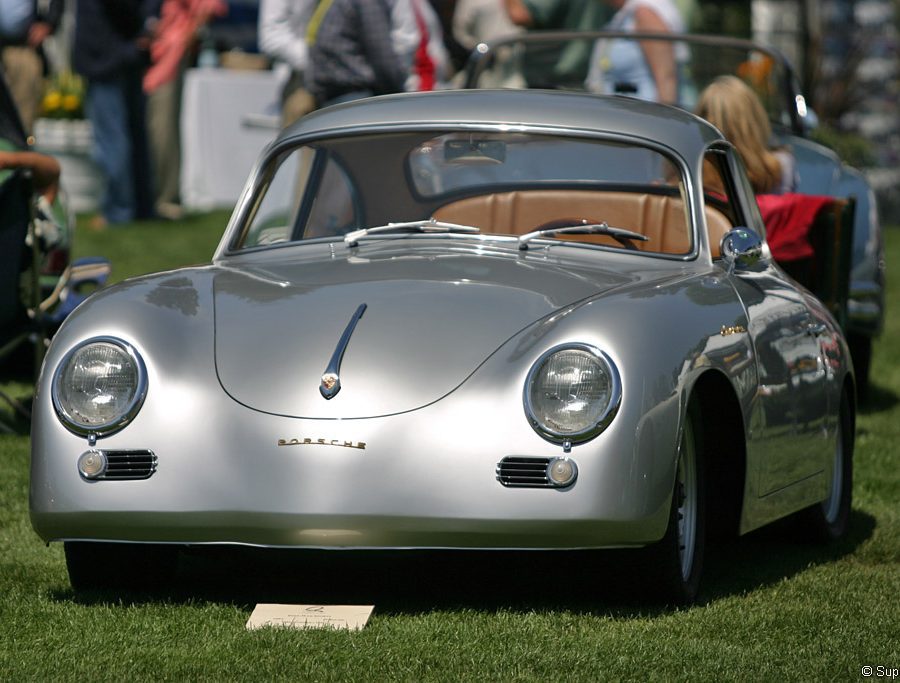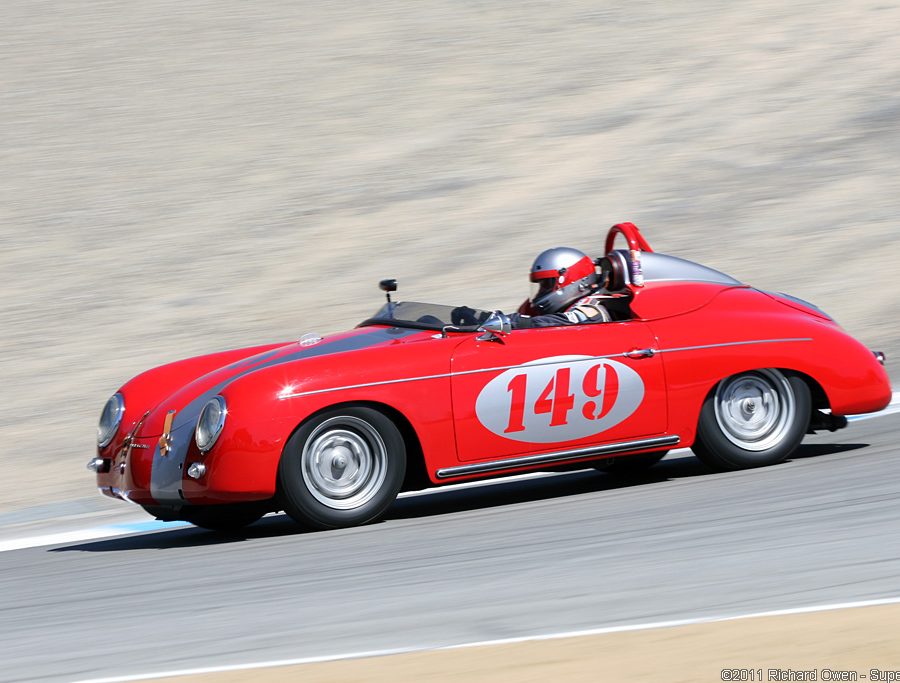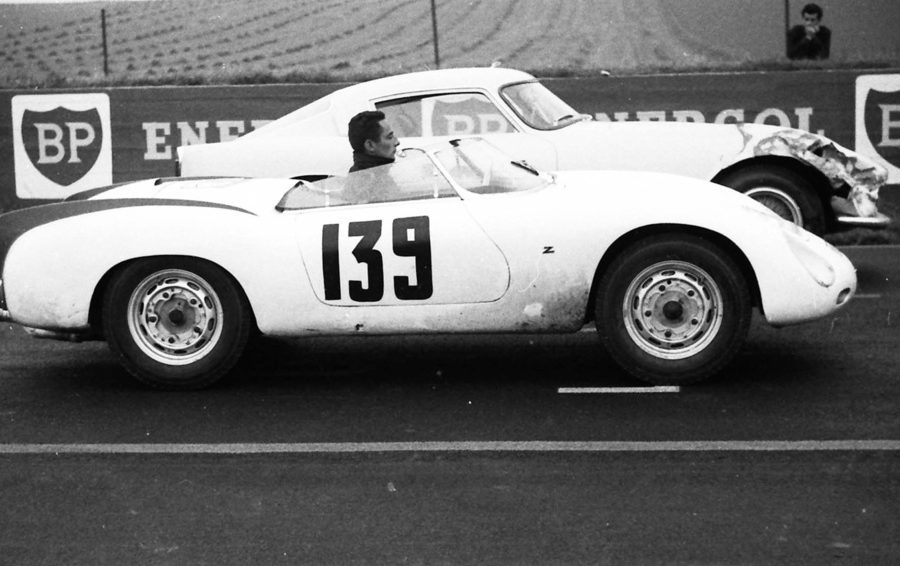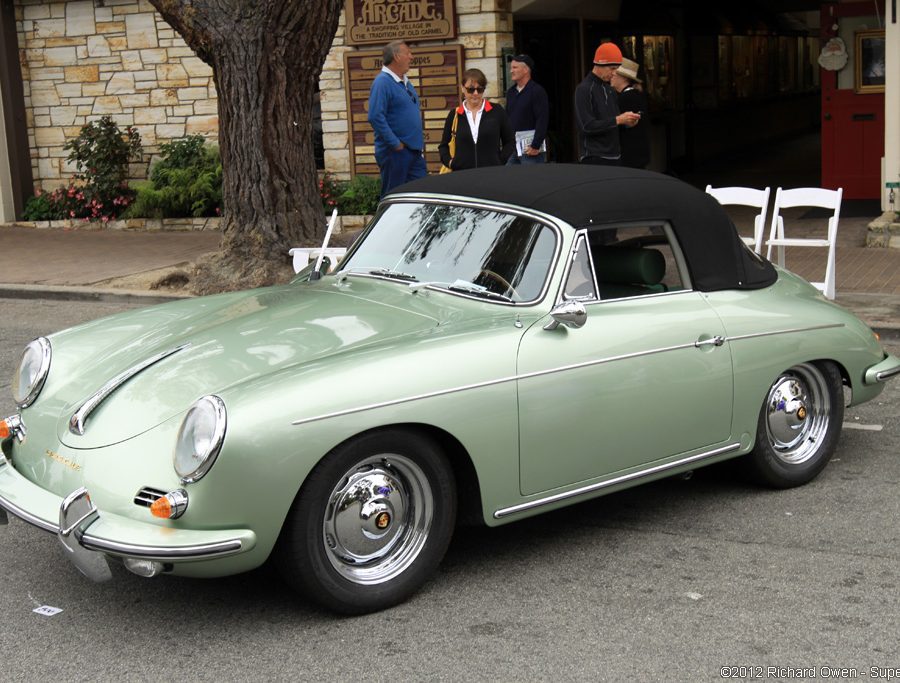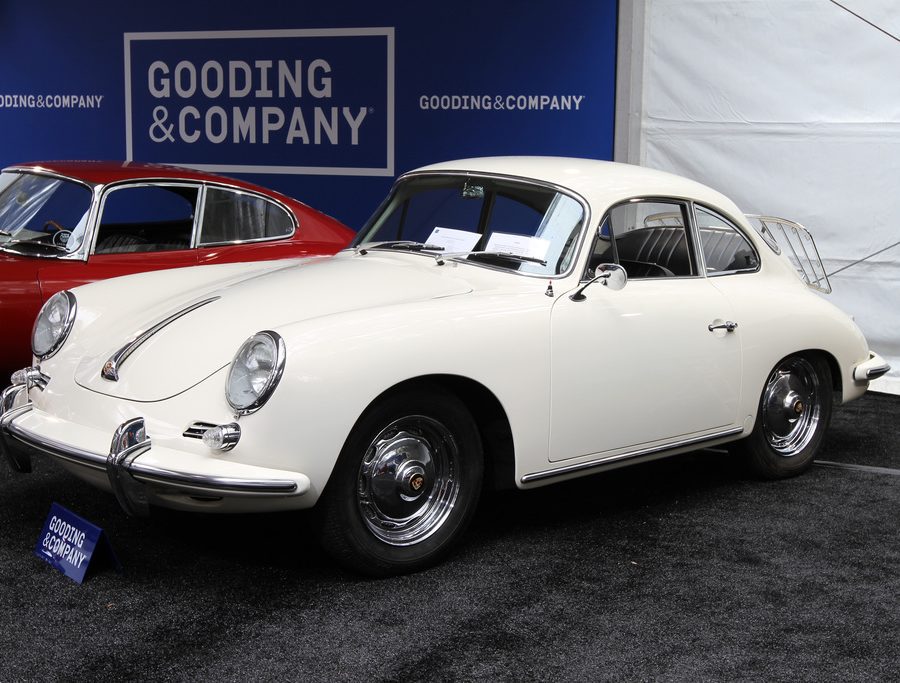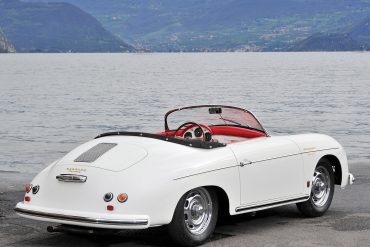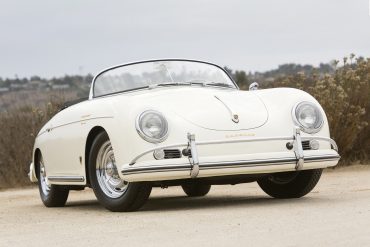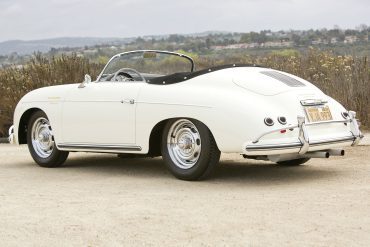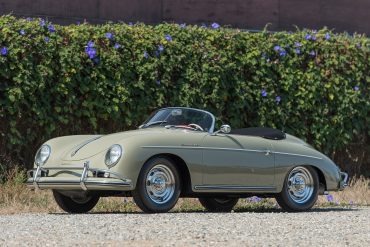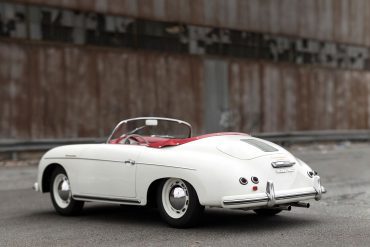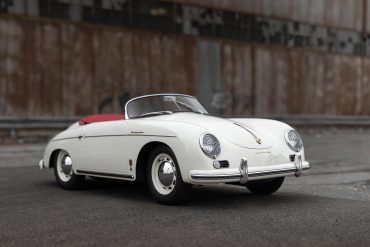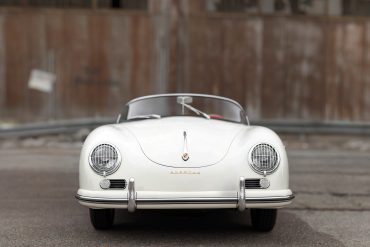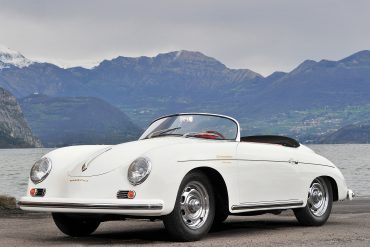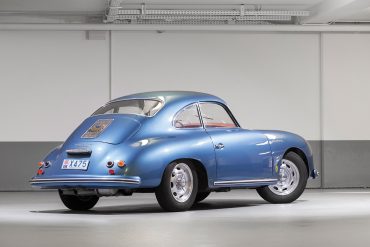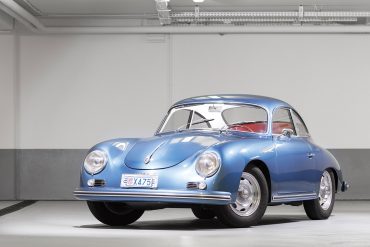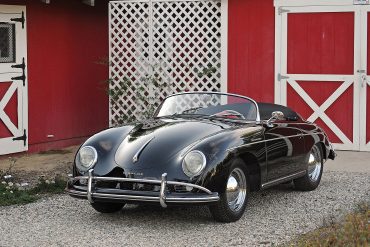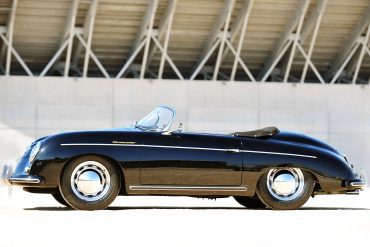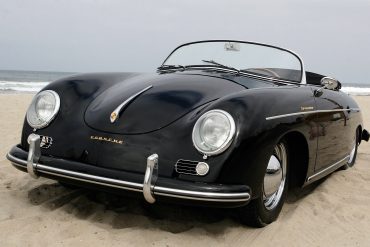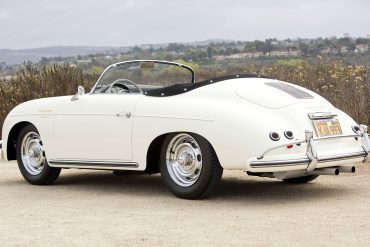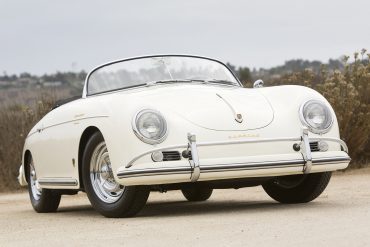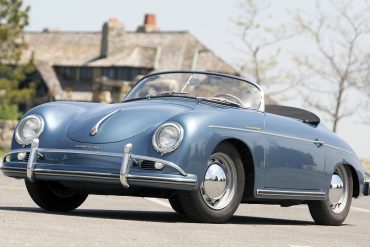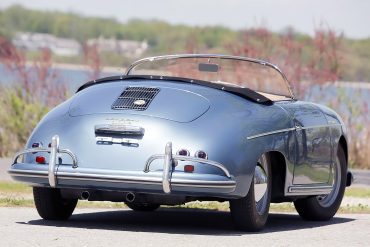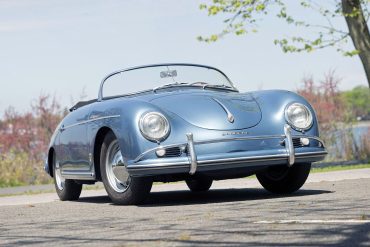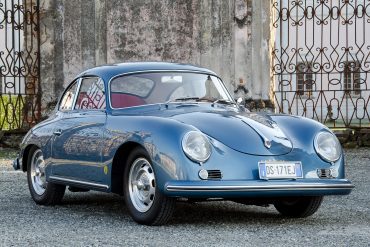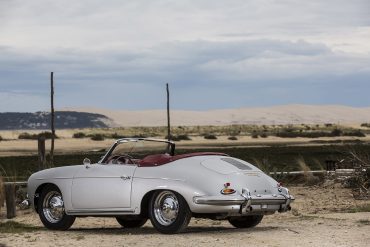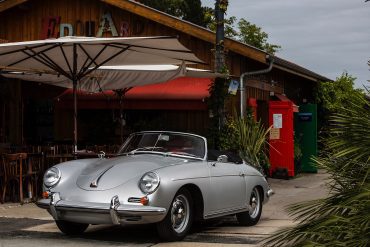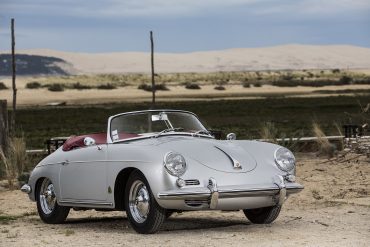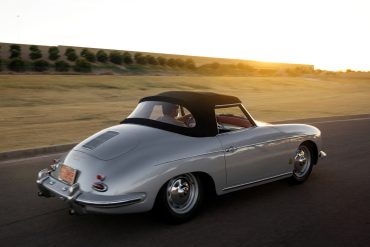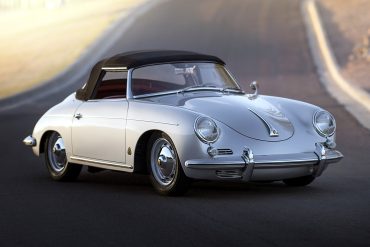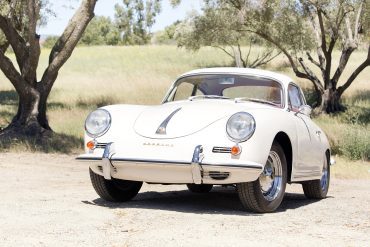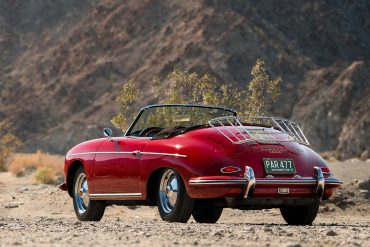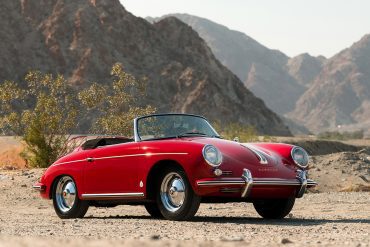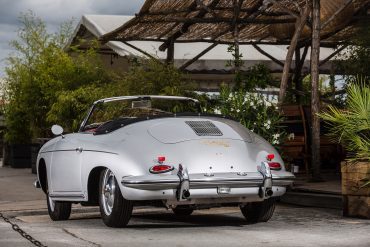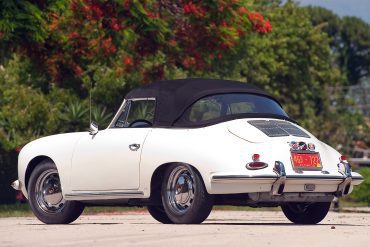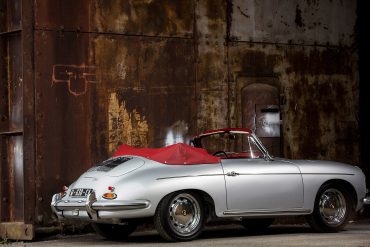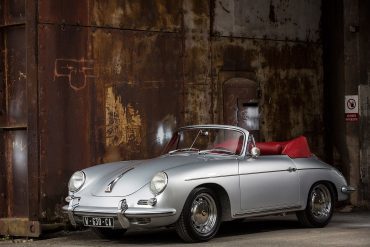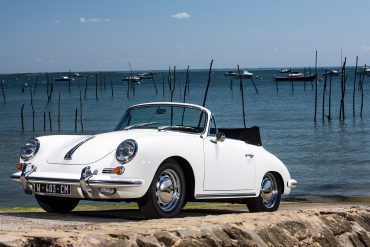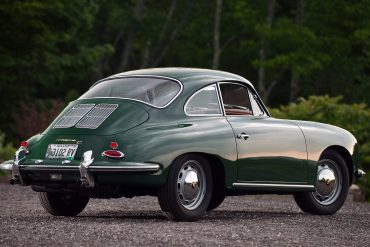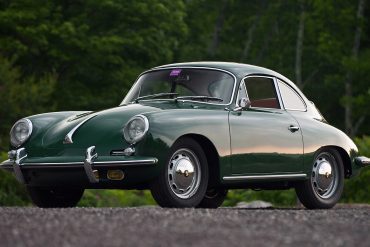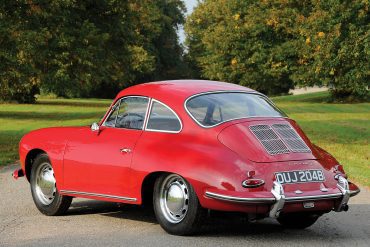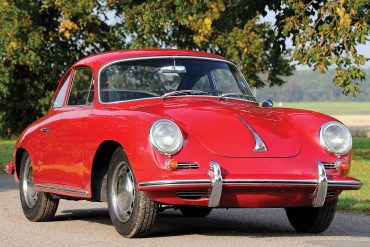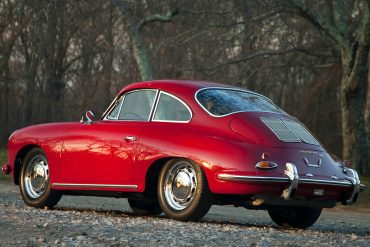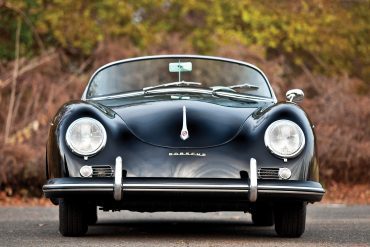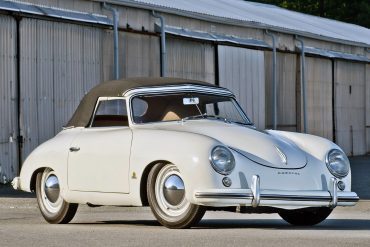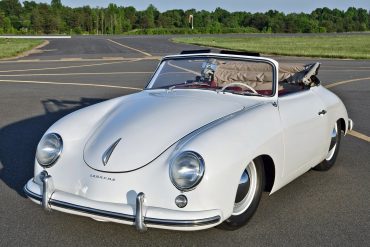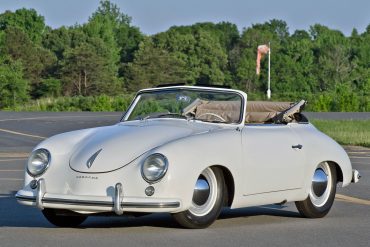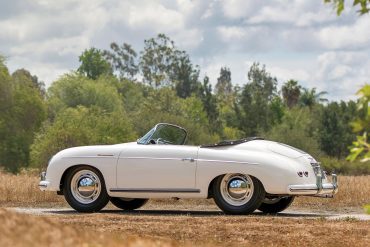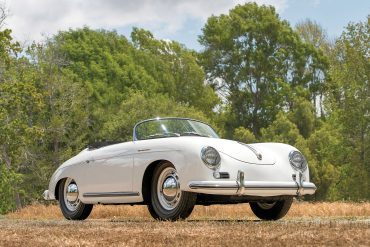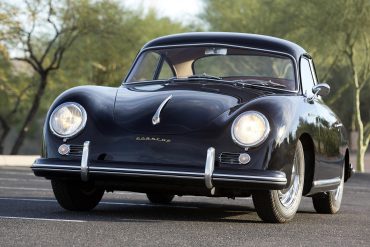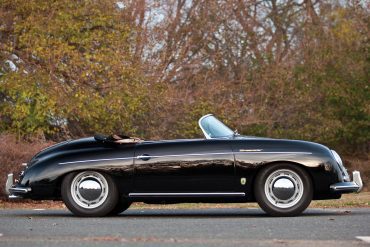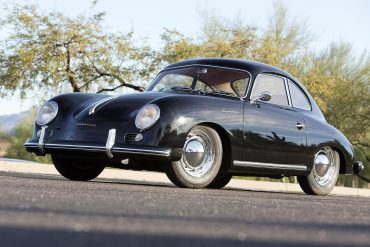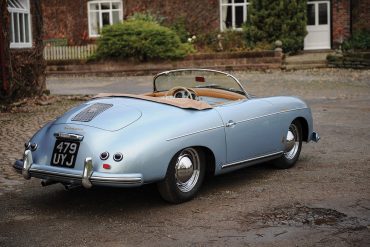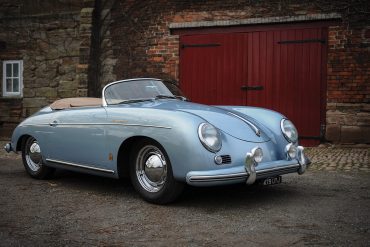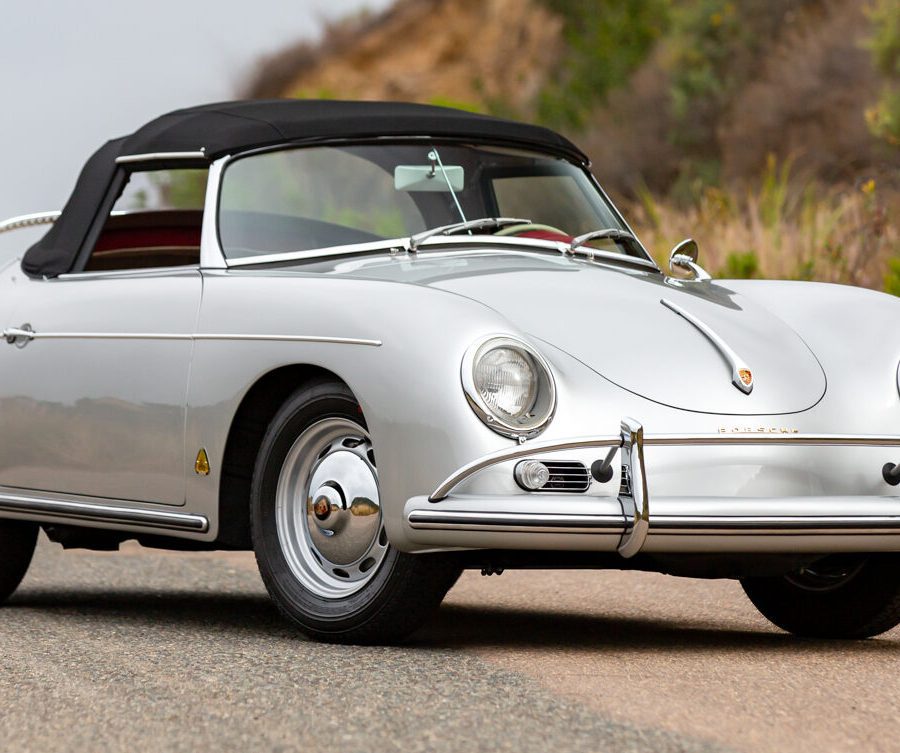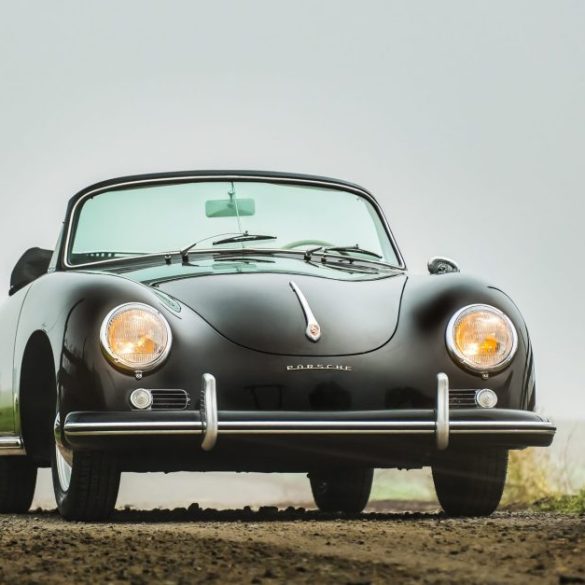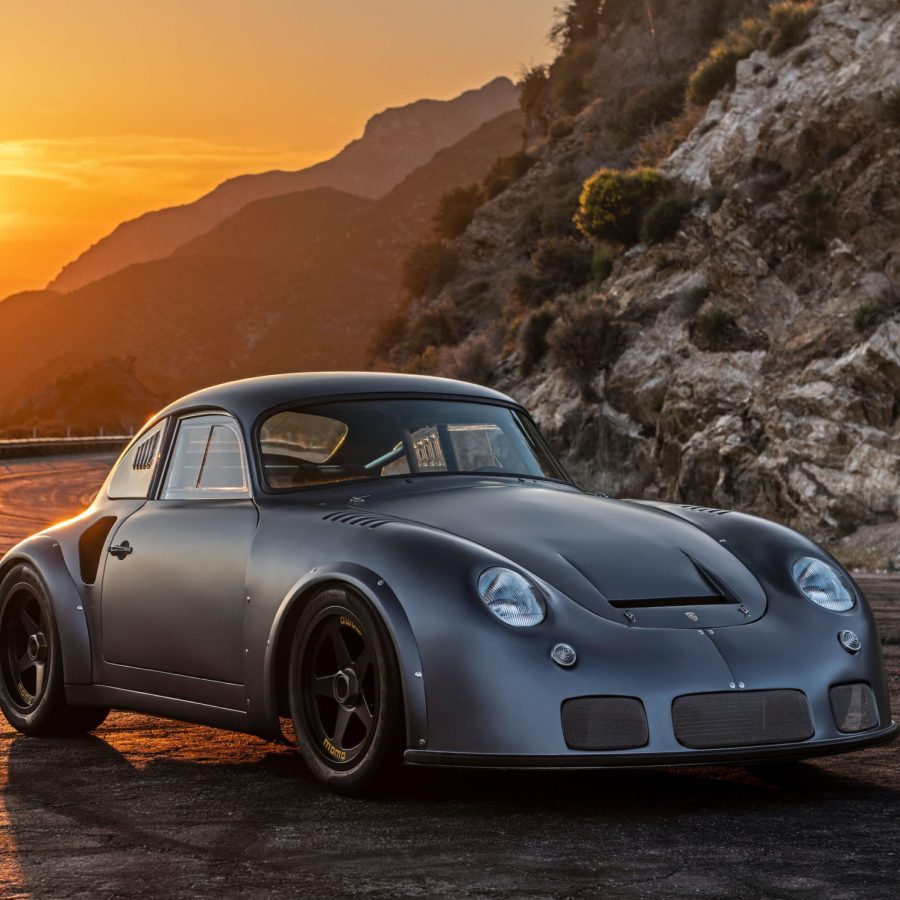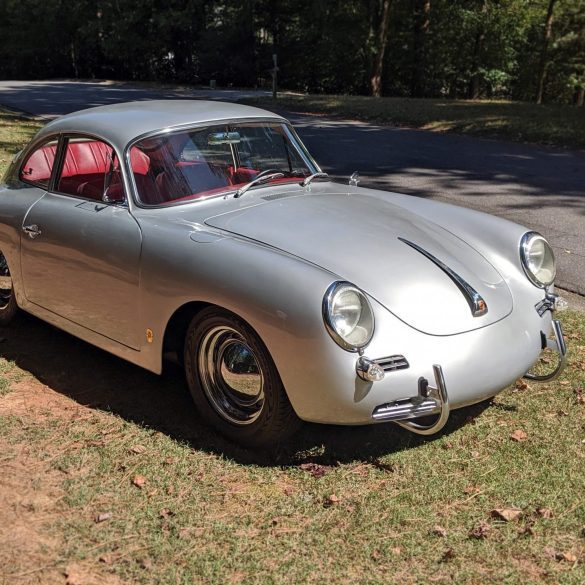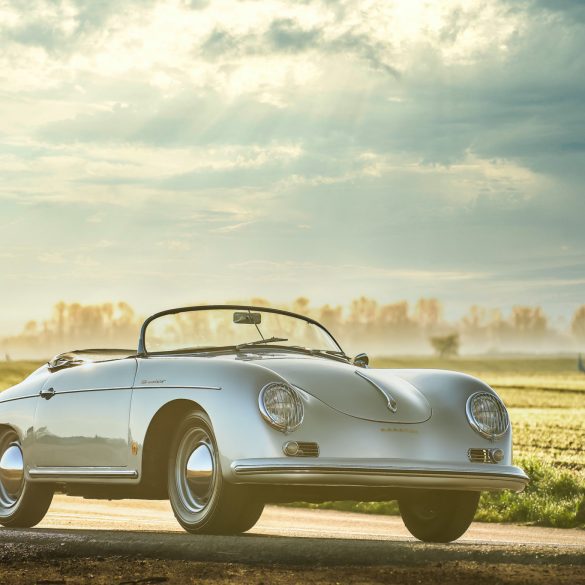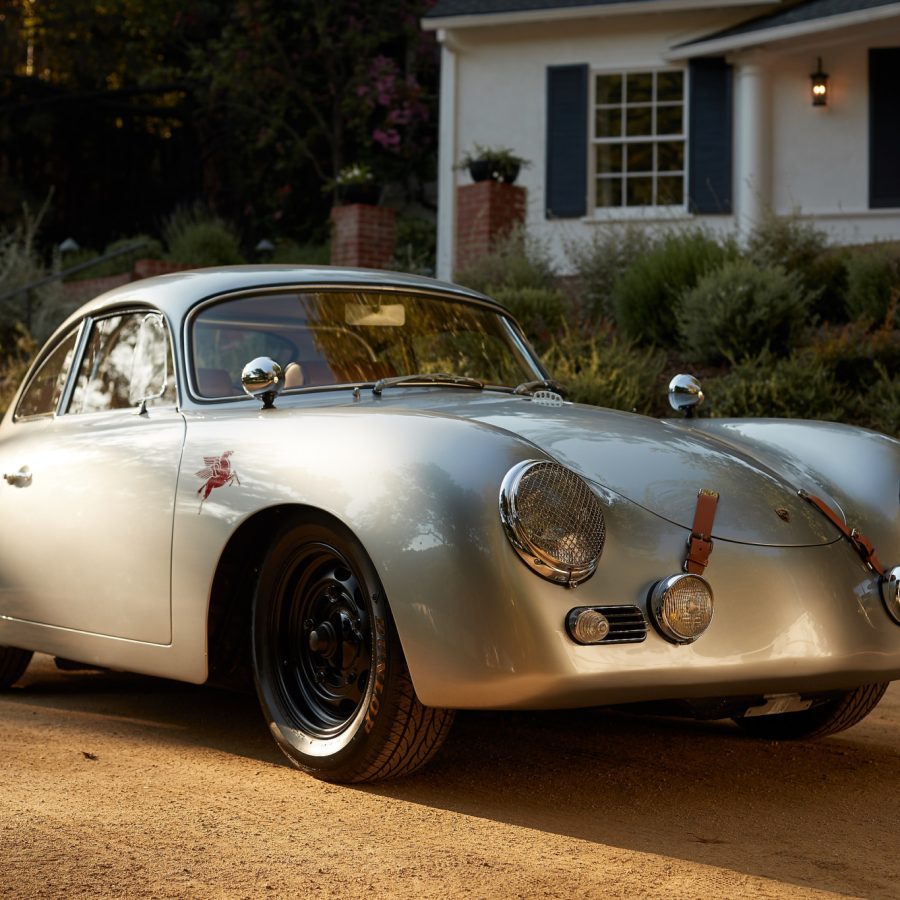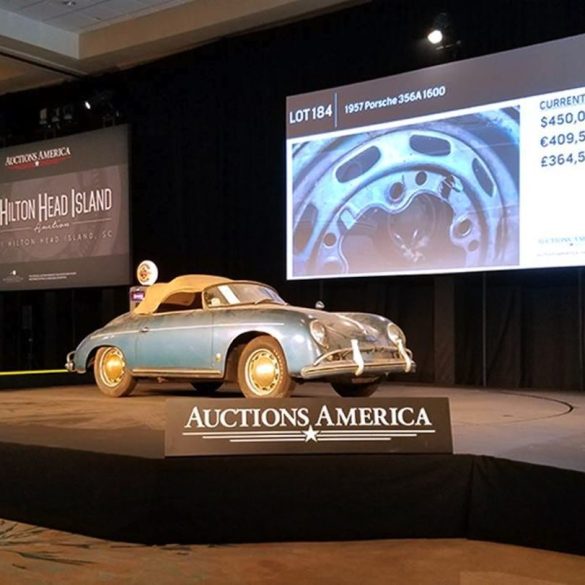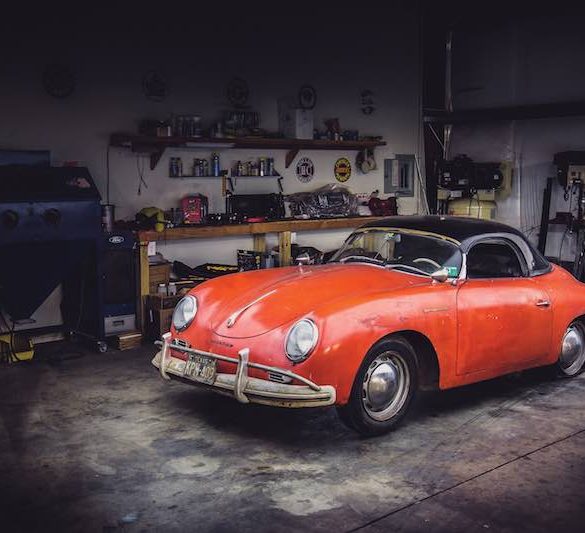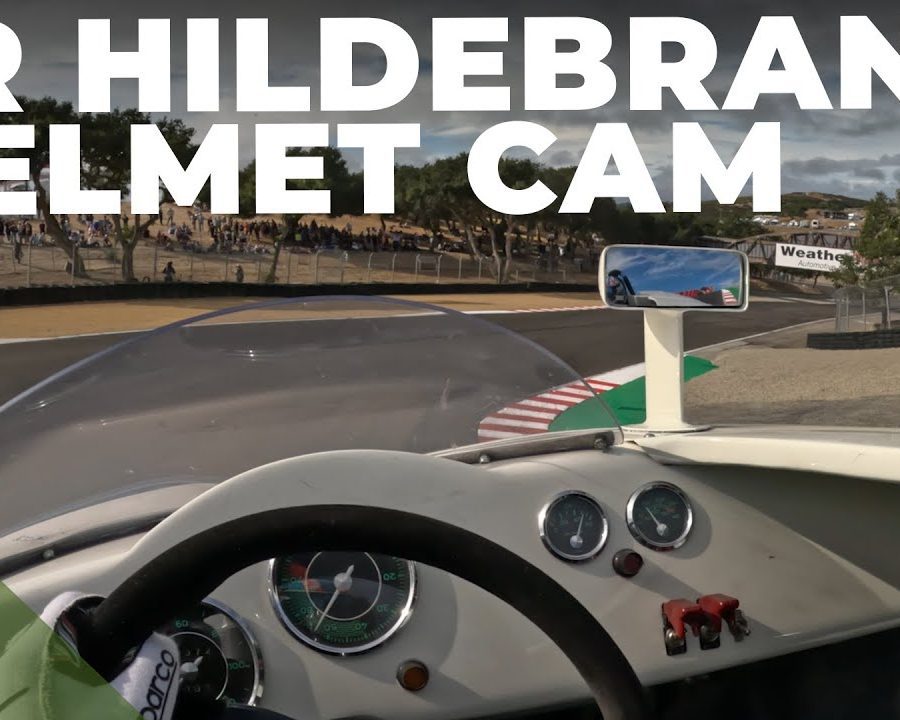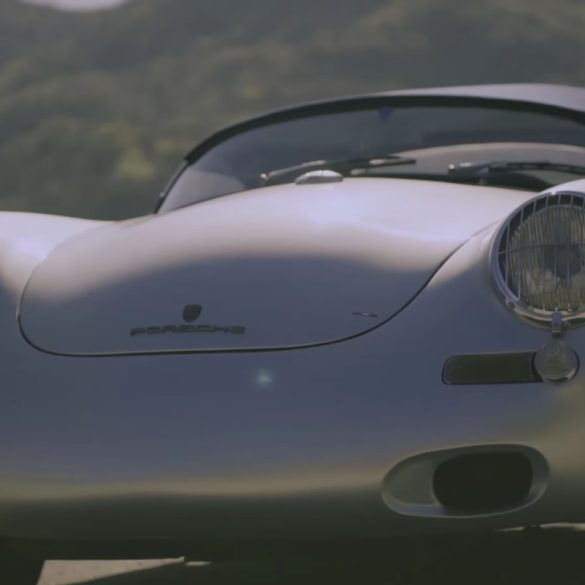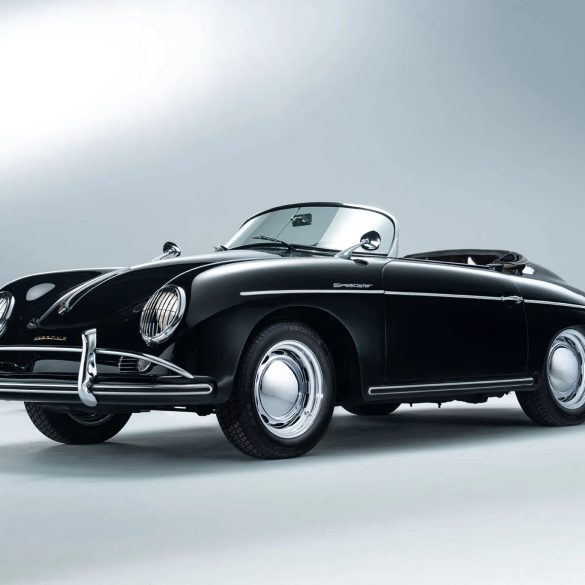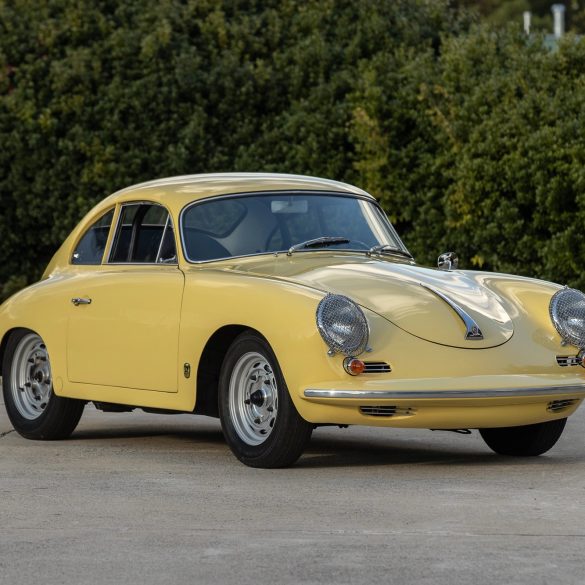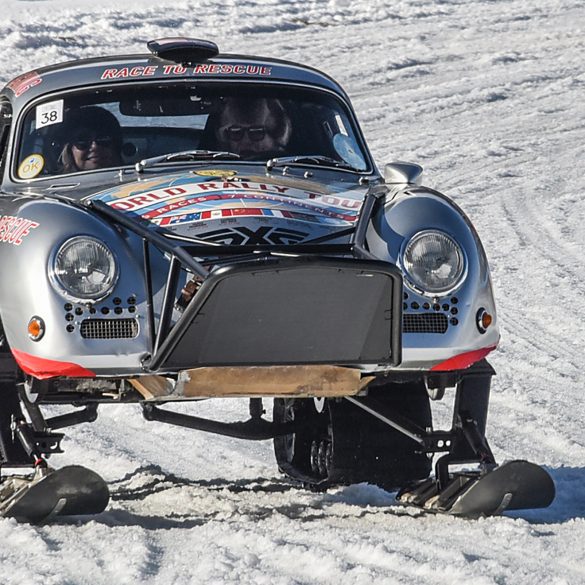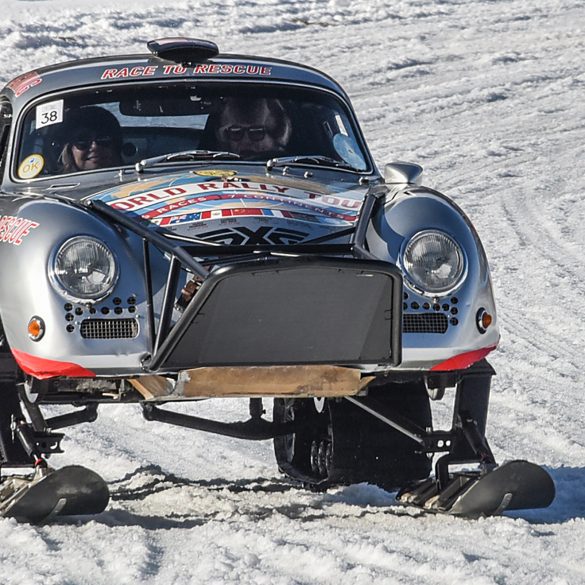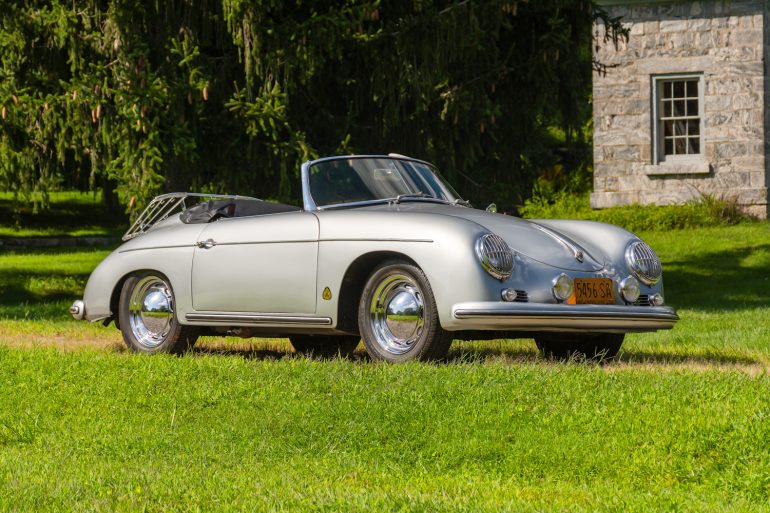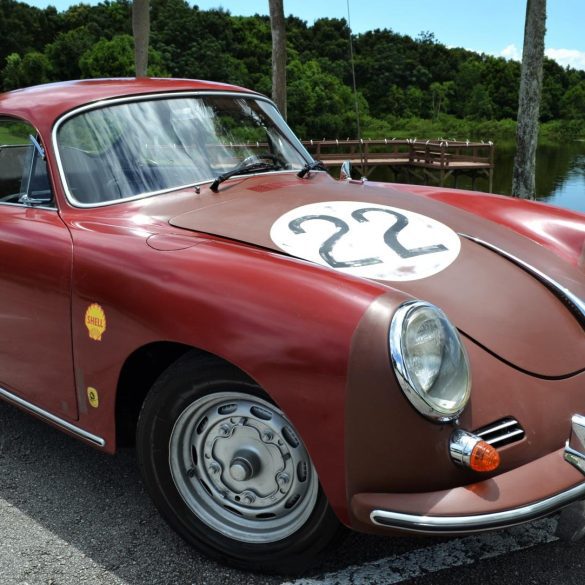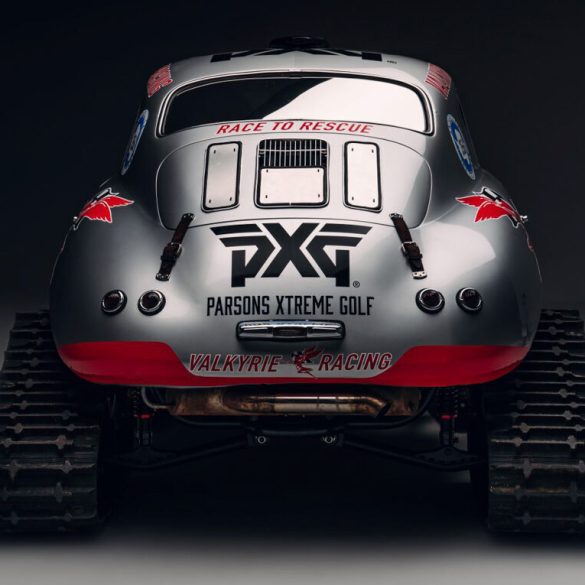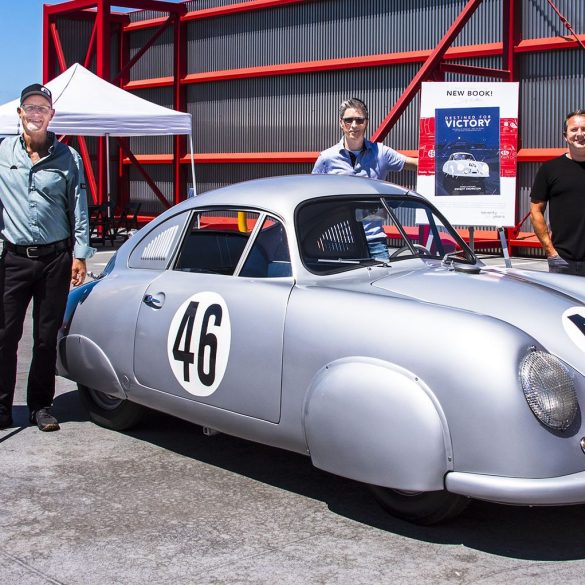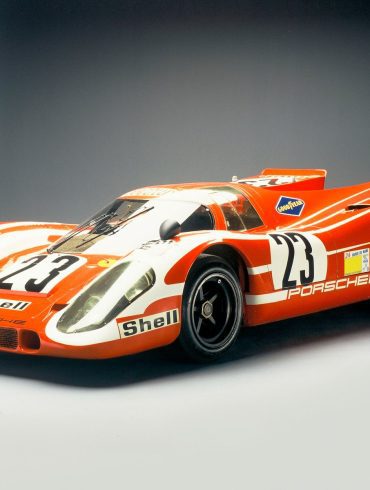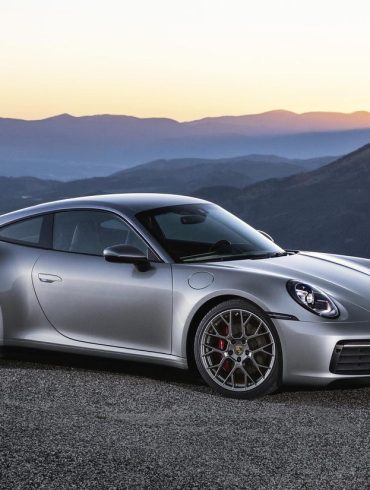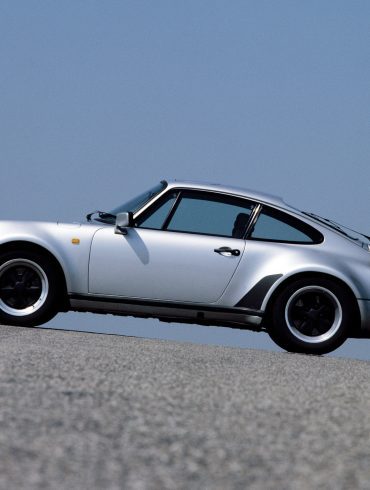Porsche 356
The Ultimate Guide
The Porsche 356, launched in 1948, wasn't just Porsche's first production car; it was the genesis of a legend. Born from the mind of Ferry Porsche, son of Ferdinand Porsche, it embodied the core values that would define the brand for decades to come. With its rear-engine, air-cooled design, the 356 prioritized lightweight agility and a connected driving experience. Its rounded shape, with distinctive features like a split windscreen and sloping roofline, became an icon of automotive design. More than just a sports car, the 356 was a versatile machine, capable of tackling everyday driving or spirited weekend adventures.
Overview / Model Guides / Featured Stories / The Market / Image Gallery
The Porsche 356: The Birth of a Legend
The Porsche 356 is more than just a classic car; it is the cornerstone of Porsche's illustrious history. As the first production vehicle to carry the Porsche badge, the 356 set the stage for decades of automotive innovation, engineering excellence, and driving joy. Launched in 1948 and produced until 1965, the Porsche 356's legacy endures in the hearts of enthusiasts and collectors worldwide.
From its humble beginnings in post-war Austria to becoming an icon on racetracks and highways alike, the Porsche 356 represents a blend of meticulous engineering, distinctive design, and spirited performance. This guide takes you through the development, design, and impact of the Porsche 356, covering everything from its origins to its various models, key innovations, and lasting influence.
Origins of the Porsche 356
The story of the Porsche 356 begins with Ferdinand "Ferry" Porsche, son of Ferdinand Porsche, the legendary automotive engineer who designed the Volkswagen Beetle. After World War II, Ferry Porsche sought to create a sports car that embodied simplicity, efficiency, and a unique driving experience. Working with a small team, he developed a prototype in Gmünd, Austria. This car, the Porsche 356 No.1, was officially road-registered on June 8, 1948.
The early models were handcrafted aluminum-bodied roadsters. Powered by a rear-mounted, air-cooled, four-cylinder engine, these initial 356s were heavily influenced by Volkswagen components but optimized for performance and handling. By 1950, production moved to Stuttgart, Germany, and the 356 evolved into a refined sports car with a steel body, thanks to Reutter Carrosserie.
Design and Engineering
The Porsche 356 was designed with simplicity and functionality in mind, yet its aesthetics were anything but ordinary. The design reflected the philosophy of aerodynamic efficiency, with smooth, flowing lines that reduced drag and enhanced performance. The rear-engine layout, borrowed from the Beetle, contributed to excellent traction and weight distribution.
Key Design Elements:
Body Styles: The Porsche 356 came in several body styles, including the Coupe, Cabriolet, and Speedster. The Speedster, introduced in 1954, is particularly iconic with its low windshield, minimalist interior, and sporty look.
Chassis and Suspension: The 356 featured a lightweight, unibody construction. The independent suspension, with torsion bars at both the front and rear, provided agile handling and stability.
Aerodynamics: The rounded shape and smooth contours were not just for visual appeal; they significantly reduced aerodynamic drag, allowing the car to achieve higher speeds efficiently.
Innovative Engineering:
The 356's engineering excellence was evident in its evolution. Early models featured a 1.1-liter engine producing just 40 horsepower, but subsequent models saw improvements in power, handling, and durability. The final versions, such as the 356C, offered engines up to 1.6 liters with 95 horsepower and featured disc brakes for superior stopping power.
Generations of the Porsche 356
Over its 17-year production run, the Porsche 356 underwent several refinements and upgrades. The evolution of the 356 can be divided into four main series:
Porsche 356 "Pre-A" (1948–1955)
The early 356 models were simple, with split or bent windshields and small 1.1 to 1.5-liter engines. In 1955, the Pre-A models culminated with the introduction of the 356 Speedster, a stripped-down, lightweight variant designed for the American market.
Porsche 356A (1955–1959)
The 356A, often referred to as the T1 and T2, introduced several improvements, including a curved windshield, updated suspension, and a wider range of engine options (1.3L to 1.6L). The Carrera engine was also introduced, offering higher performance.
Porsche 356B (1959–1963)
The 356B, known as the T5 and T6, brought a more aggressive front design with higher bumpers and a revised hood. Engine options continued to improve, and the Carrera 2 featured a 2.0-liter engine. The 356B also introduced the Roadster model, replacing the Speedster.
Porsche 356C (1963–1965)
The final iteration of the 356, the 356C, featured the most advanced engineering of the series, including standard disc brakes and the powerful SC engine producing 95 horsepower. The 356C represents the pinnacle of the model's evolution, combining refined performance with classic styling.
Performance and Driving Experience
The Porsche 356 was not a powerhouse by modern standards, but it delivered an exhilarating driving experience through its nimble handling, responsive steering, and balanced chassis. The lightweight construction, coupled with the rear-engine layout, provided exceptional traction and a unique driving dynamic.
Notable Performance Metrics:
0-60 mph: Early models achieved 0-60 mph in around 14 seconds, while later models like the 356SC could do it in under 10 seconds.
Top Speed: Depending on the model, top speeds ranged from 90 mph to over 120 mph for the high-performance Carrera variants.
The 356's performance on both the road and the track cemented Porsche's reputation for building reliable, fun-to-drive sports cars. The car's success in motorsport, including wins at the 24 Hours of Le Mans and the Mille Miglia, demonstrated its durability and capability.
Cultural Impact and Legacy
The Porsche 356 became a symbol of post-war optimism, engineering prowess, and accessible performance. It quickly gained a devoted following, especially in the United States, where enthusiasts embraced the car's blend of European sophistication and sporty flair. Celebrities such as James Dean and Steve McQueen helped popularize the 356, adding to its allure.
The 356's influence extends beyond its production years. It established the design and engineering principles that would define future Porsche models, including the legendary 911. The spirit of the 356 lives on in modern Porsches, where the focus on driver engagement, precision, and quality remains paramount.
Collectibility and Value
Today, the Porsche 356 is one of the most sought-after classic cars. Its timeless design, historical significance, and driving pleasure make it a favorite among collectors. Prices vary depending on model, condition, and rarity:
356 Pre-A and Speedsters are particularly valuable, often commanding prices well over $300,000.
Well-maintained 356C Coupes can range from $70,000 to $150,000.
Restored examples with original parts and documentation fetch premium prices at auctions.
The community of 356 enthusiasts remains vibrant, with clubs, events, and restoration specialists dedicated to preserving these iconic cars. Events like the Porsche Parade and the 356 Registry gatherings celebrate the legacy of the 356 and bring together owners and admirers from around the world.
Conclusion
The Porsche 356 is more than just the first Porsche sports car—it is a symbol of innovation, perseverance, and passion. Its elegant design, impressive engineering, and exhilarating performance laid the foundation for the Porsche brand's global success. Whether admired on display, driven on scenic routes, or raced on historic tracks, the 356 continues to captivate and inspire. For anyone who appreciates automotive history, the Porsche 356 remains the ultimate expression of classic sports car excellence.
Porsche 356 Basics
Manufacturer: Porsche Konstruktionen (1948–1949) & Dr. Ing. h. c. F. Porsche (1950–1965)
Production Years: 1948–1965
Total Production: ~78,000 units
Designer: Erwin Komenda
Body Styles: 2-door coupé, convertible, roadster
Layout: Rear-engine, rear-wheel-drive
Wheelbase: 2,100 mm (82.7 in)
Length: 3,870–4,010 mm (152.4–157.9 in)
Width: 1,660 mm (65.4 in),
Height: 1,220–1,320 mm (48.0–51.8 in)
Curb weight: 771–1,041 kg
More Info
The 356 is a masterpiece of automotive design. It's simple, elegant, and timeless.
Stuttcars
I couldn't find the sports car of my dreams, so I built it myself.
Ferdinand Porsche


